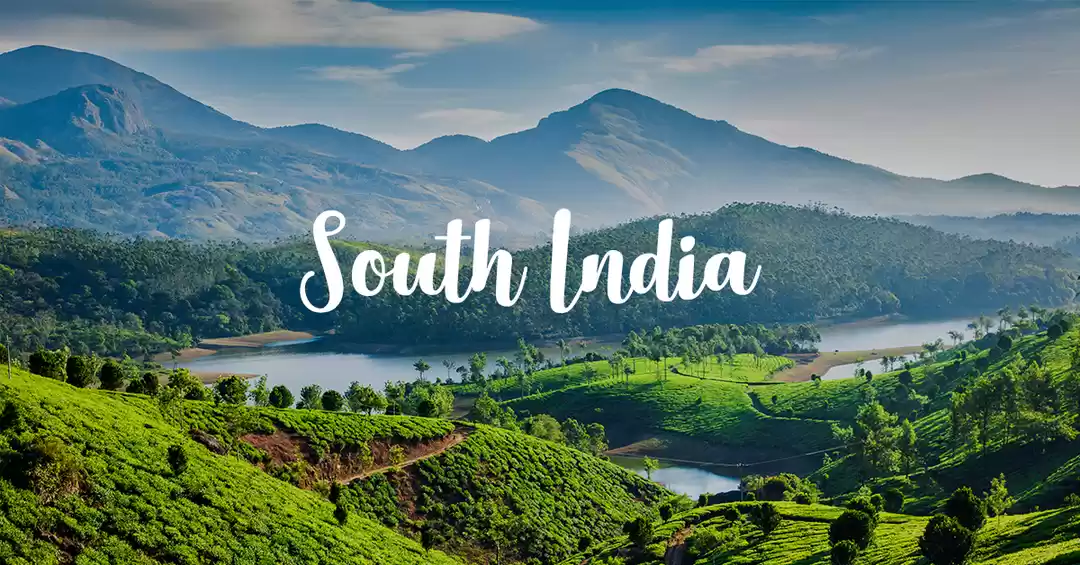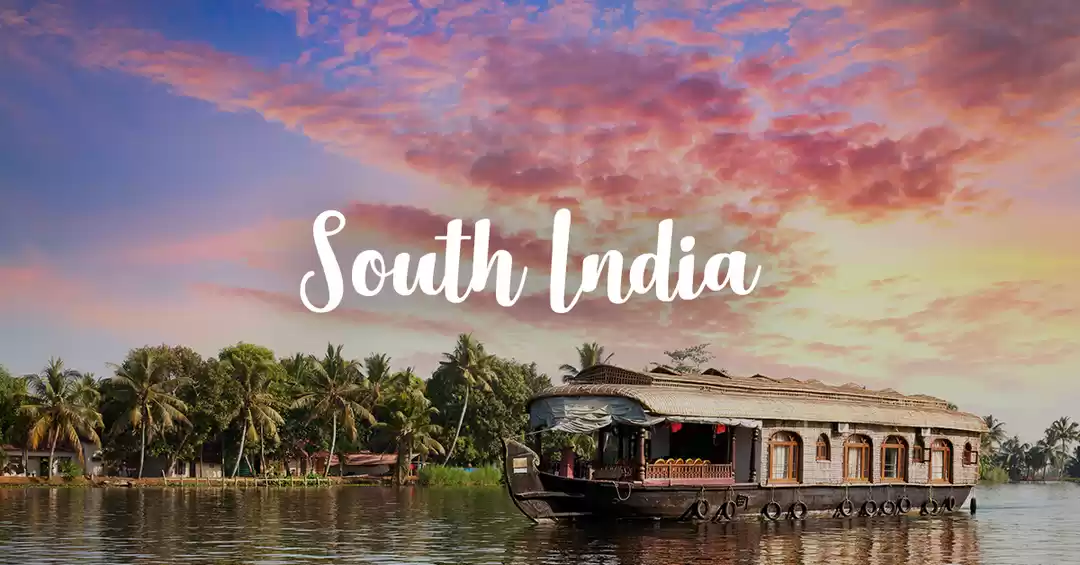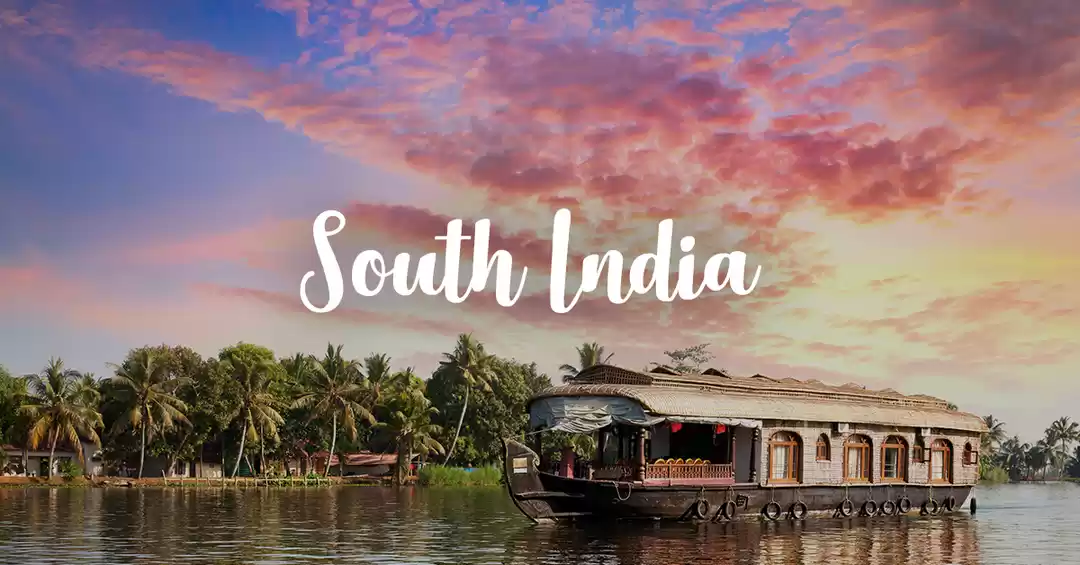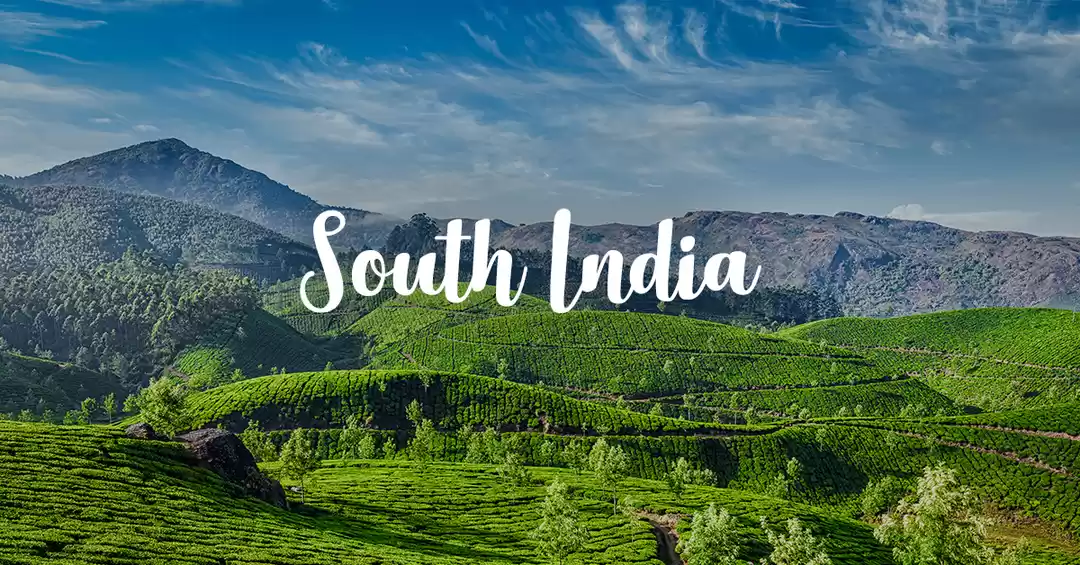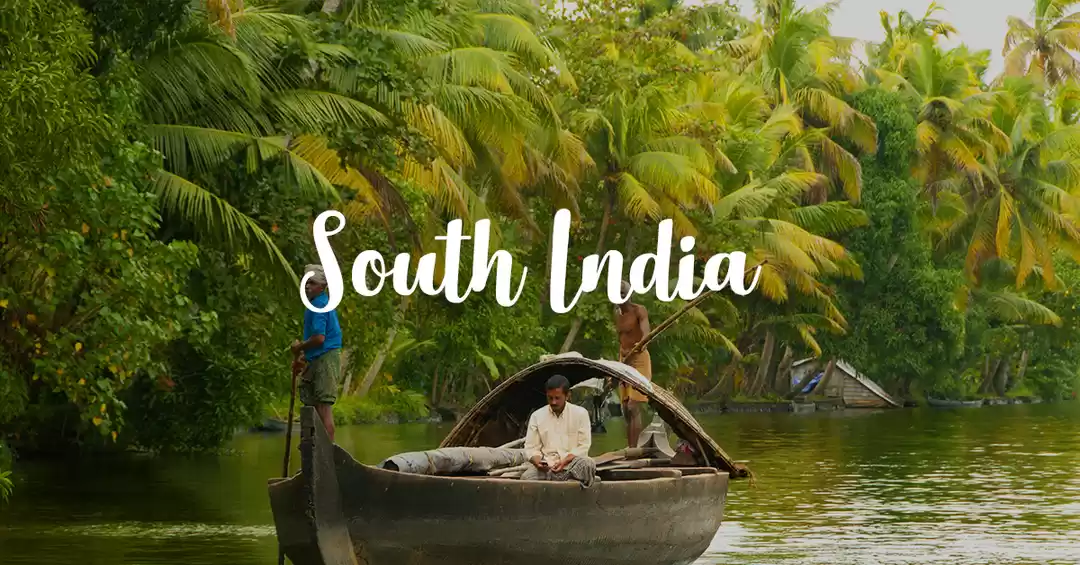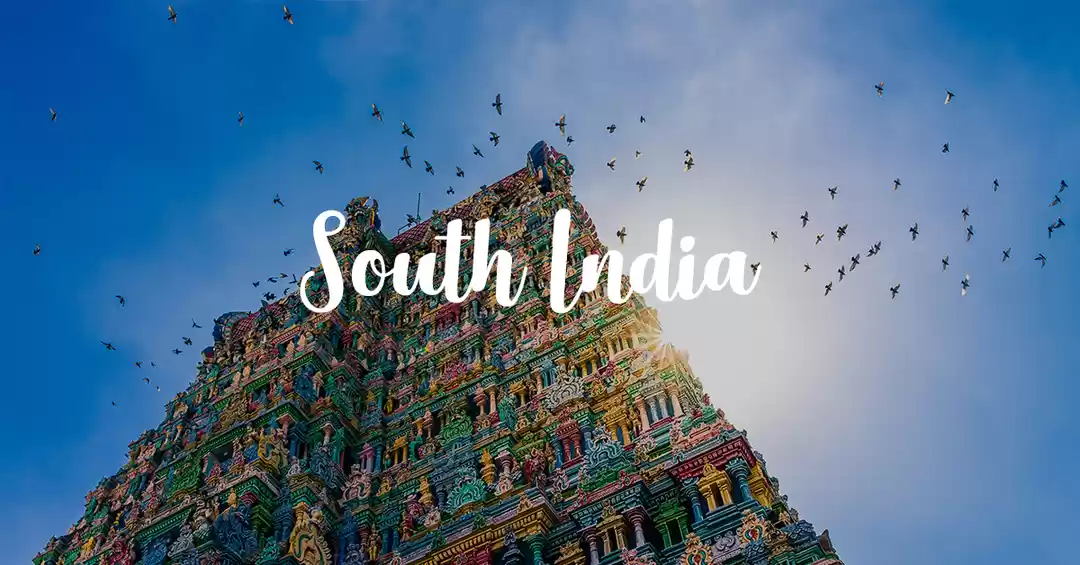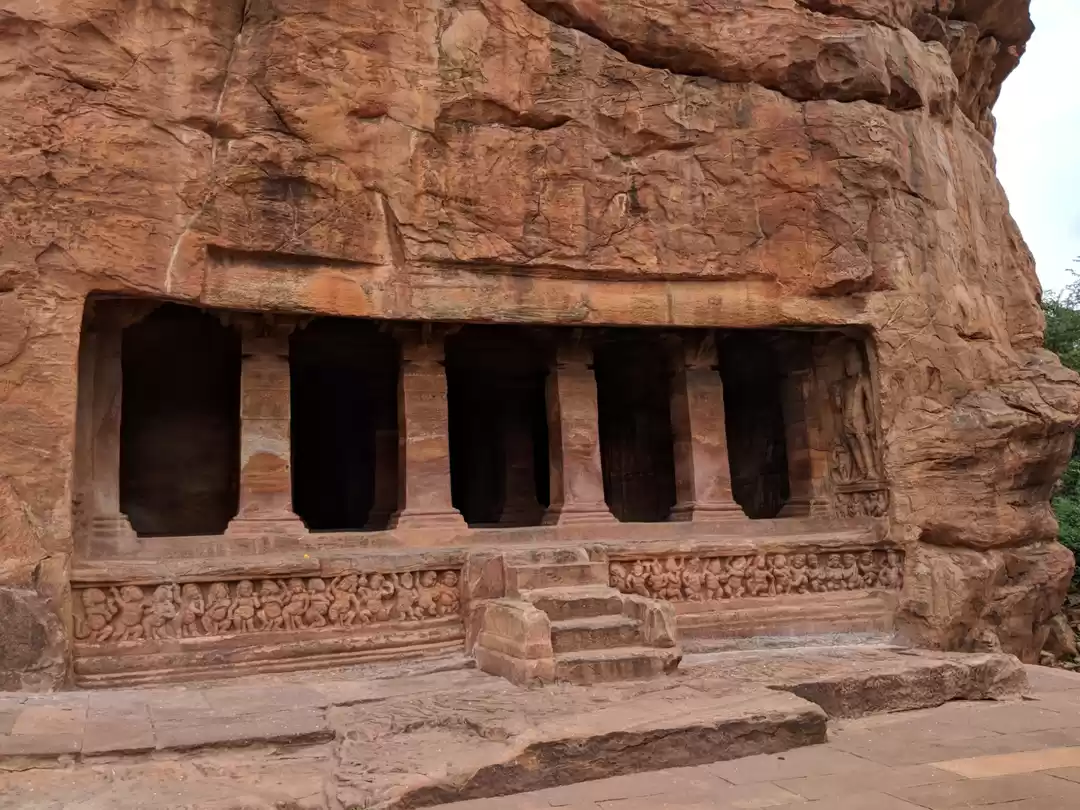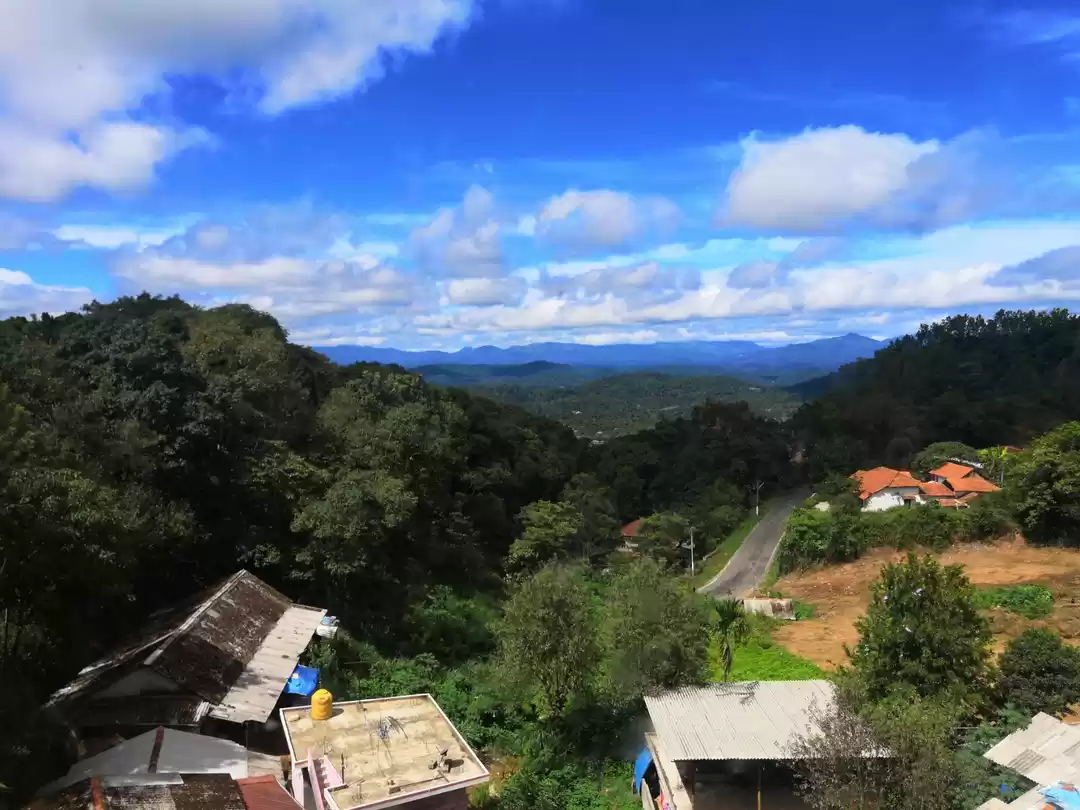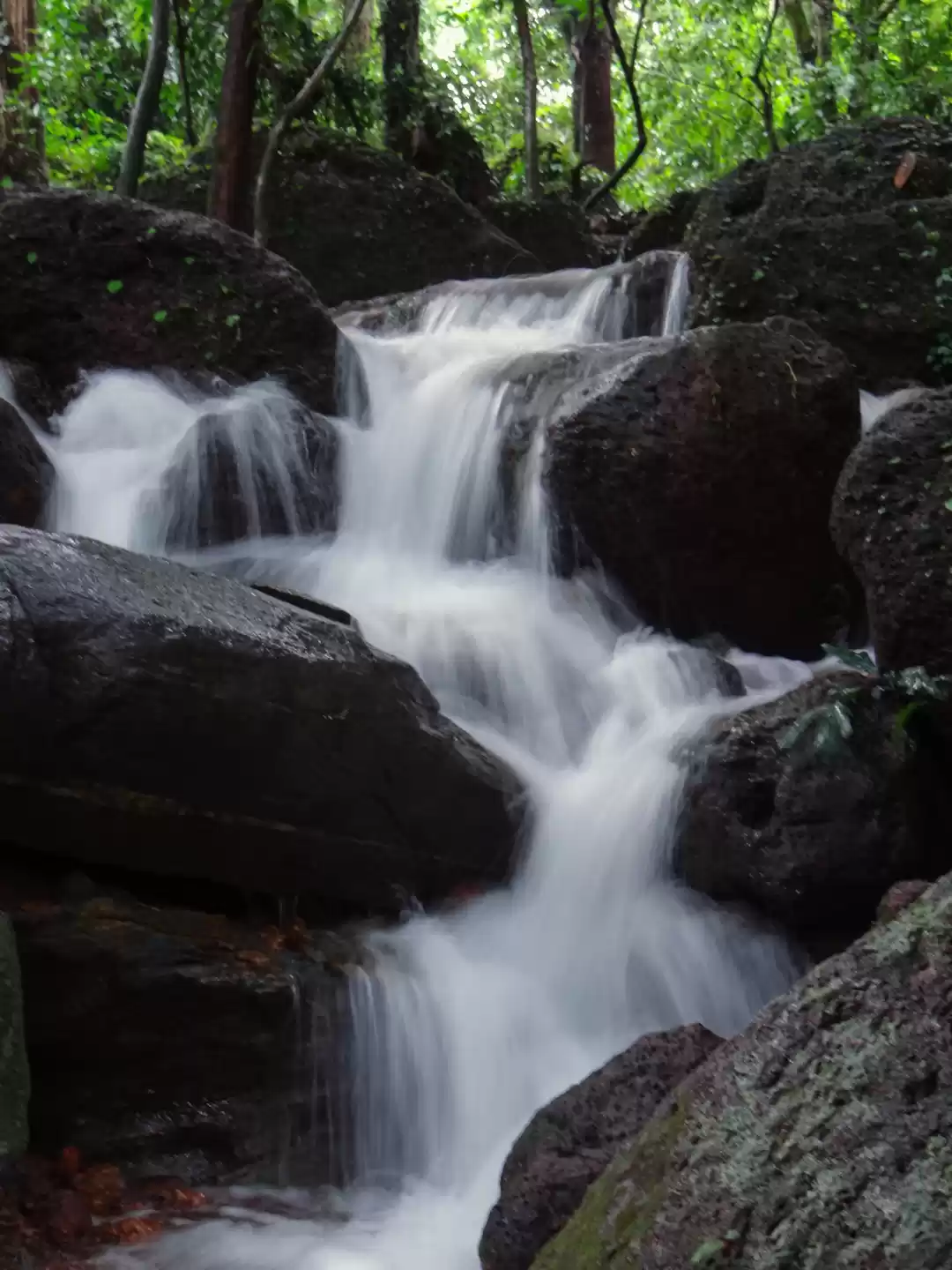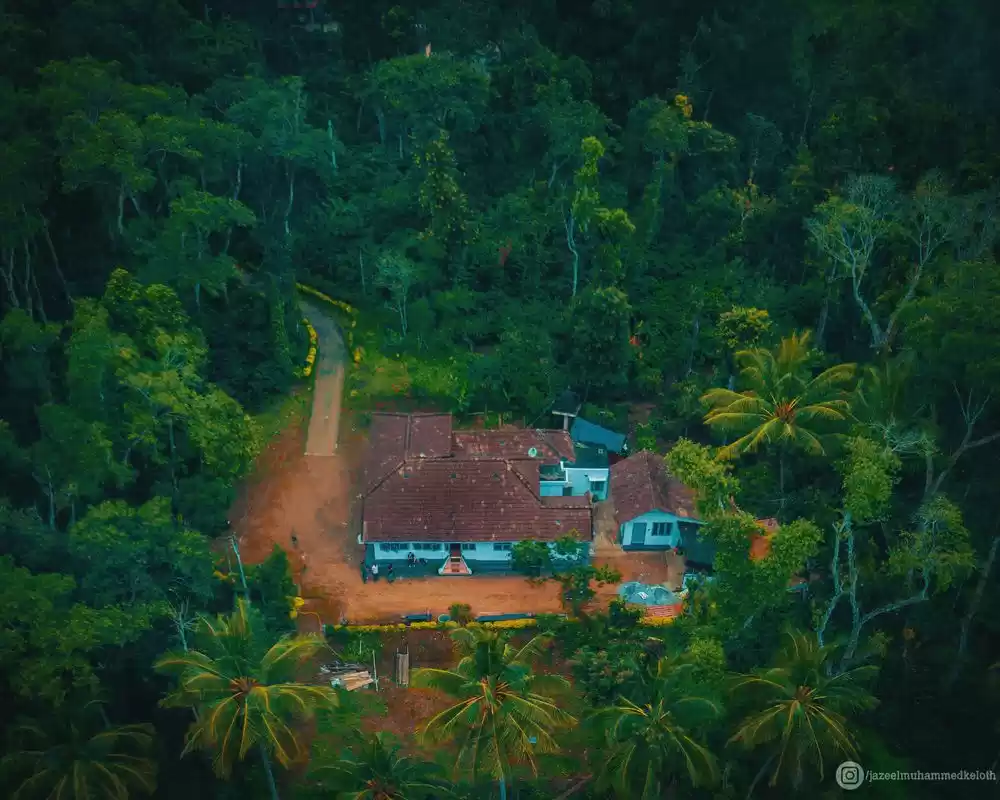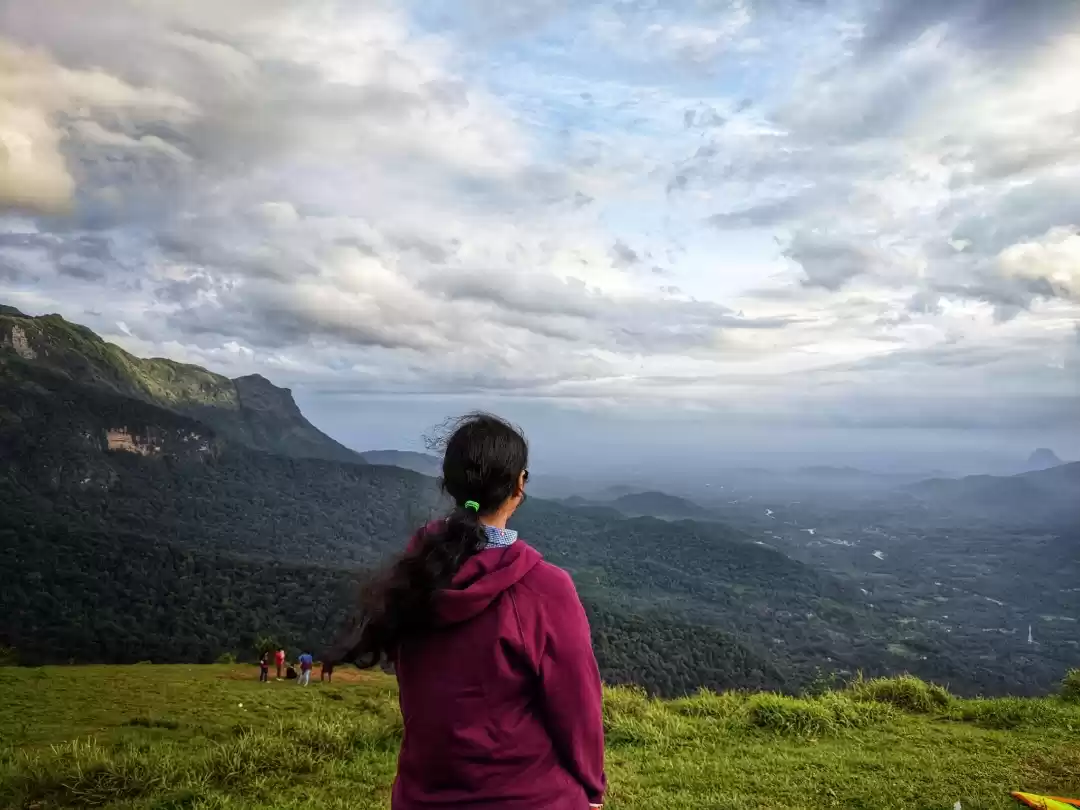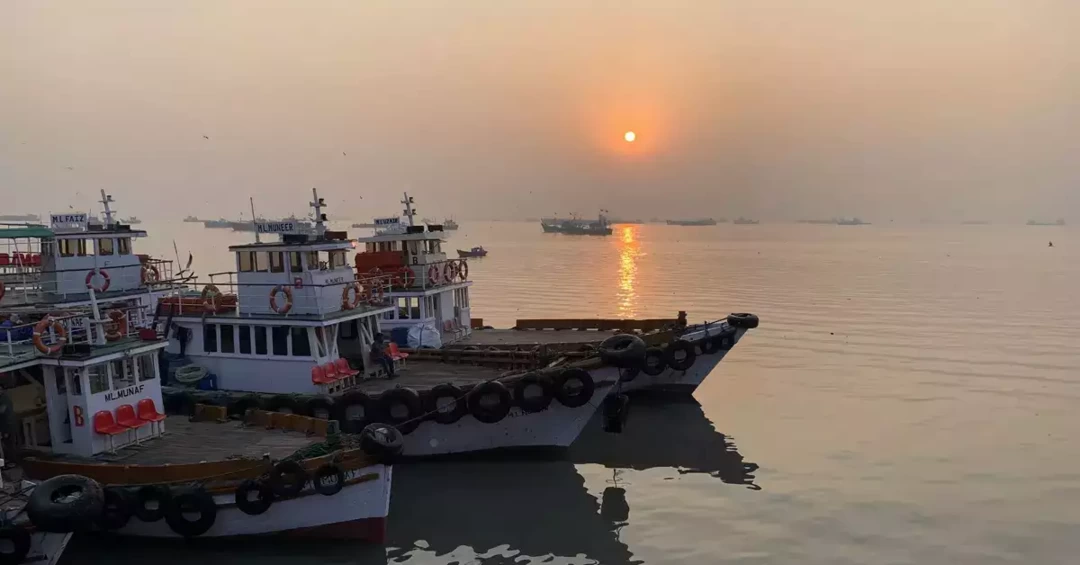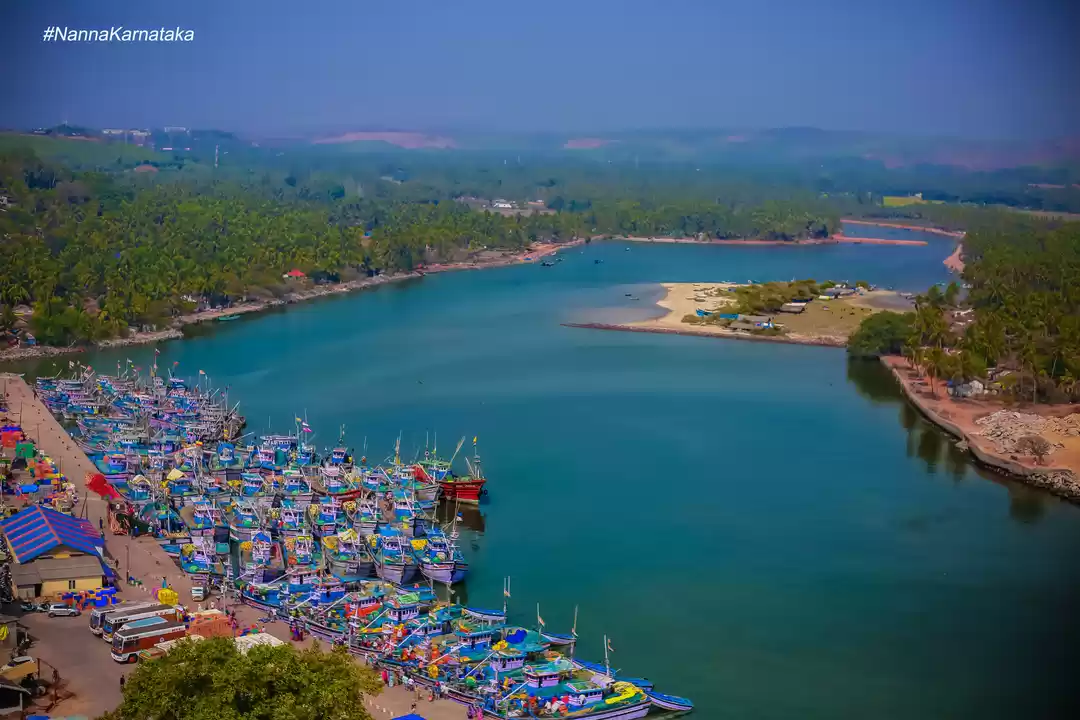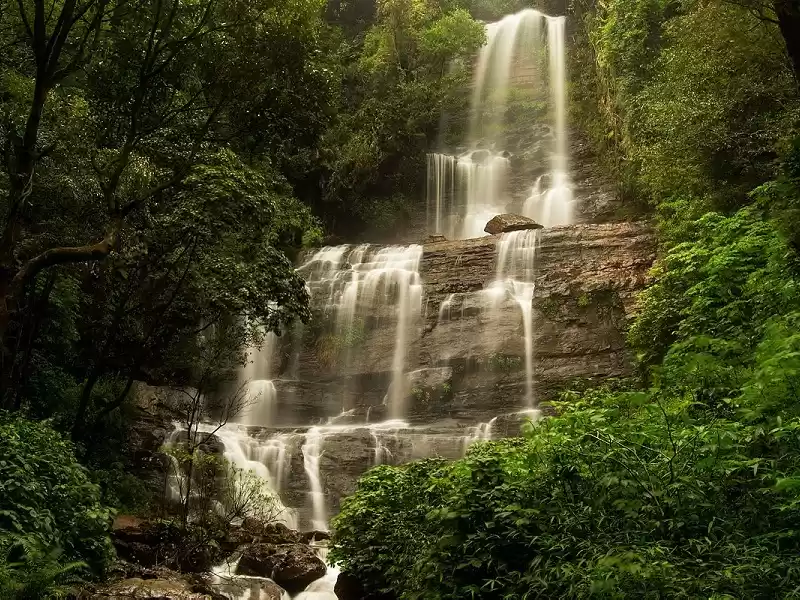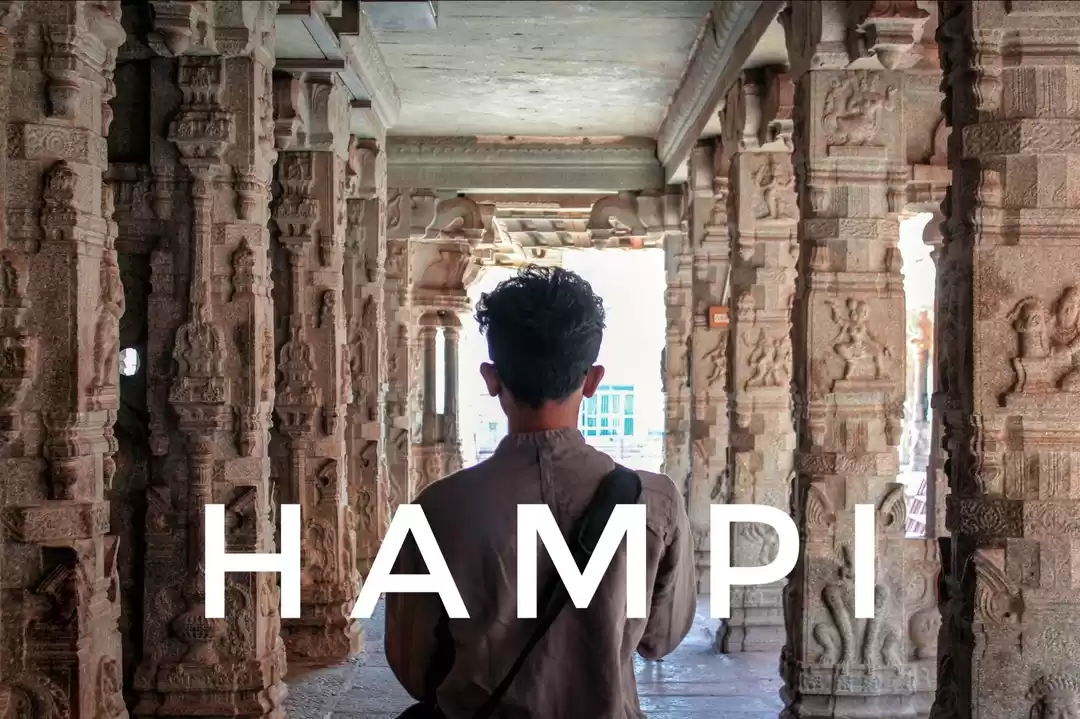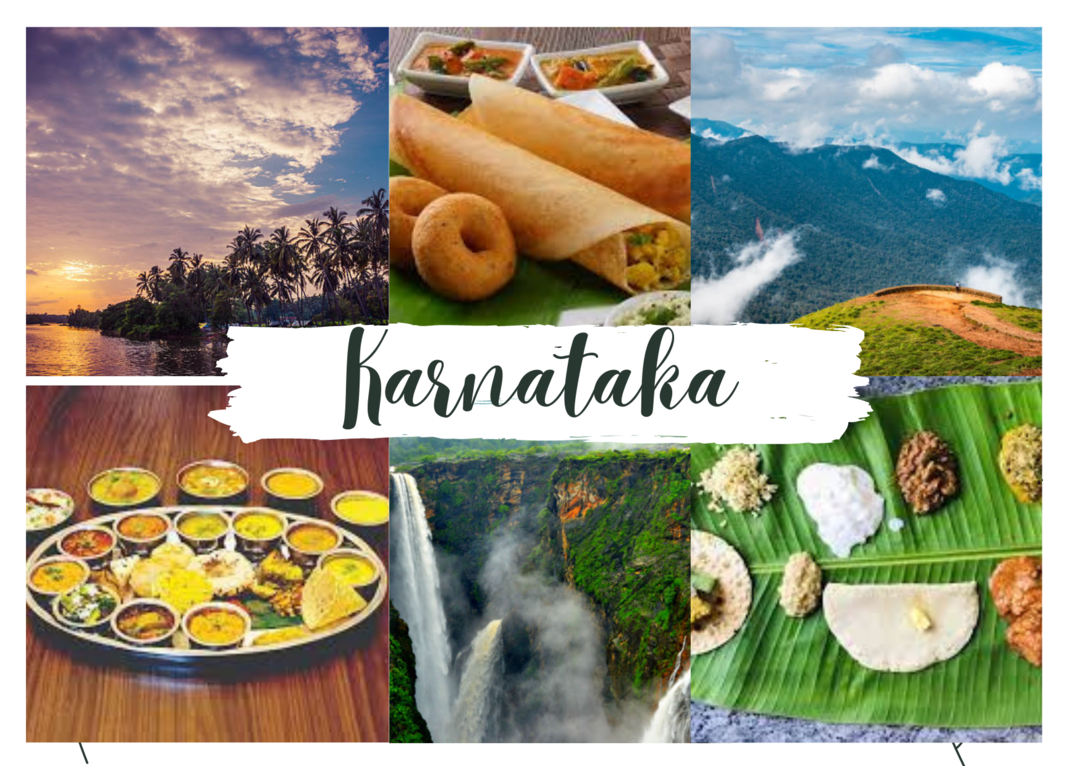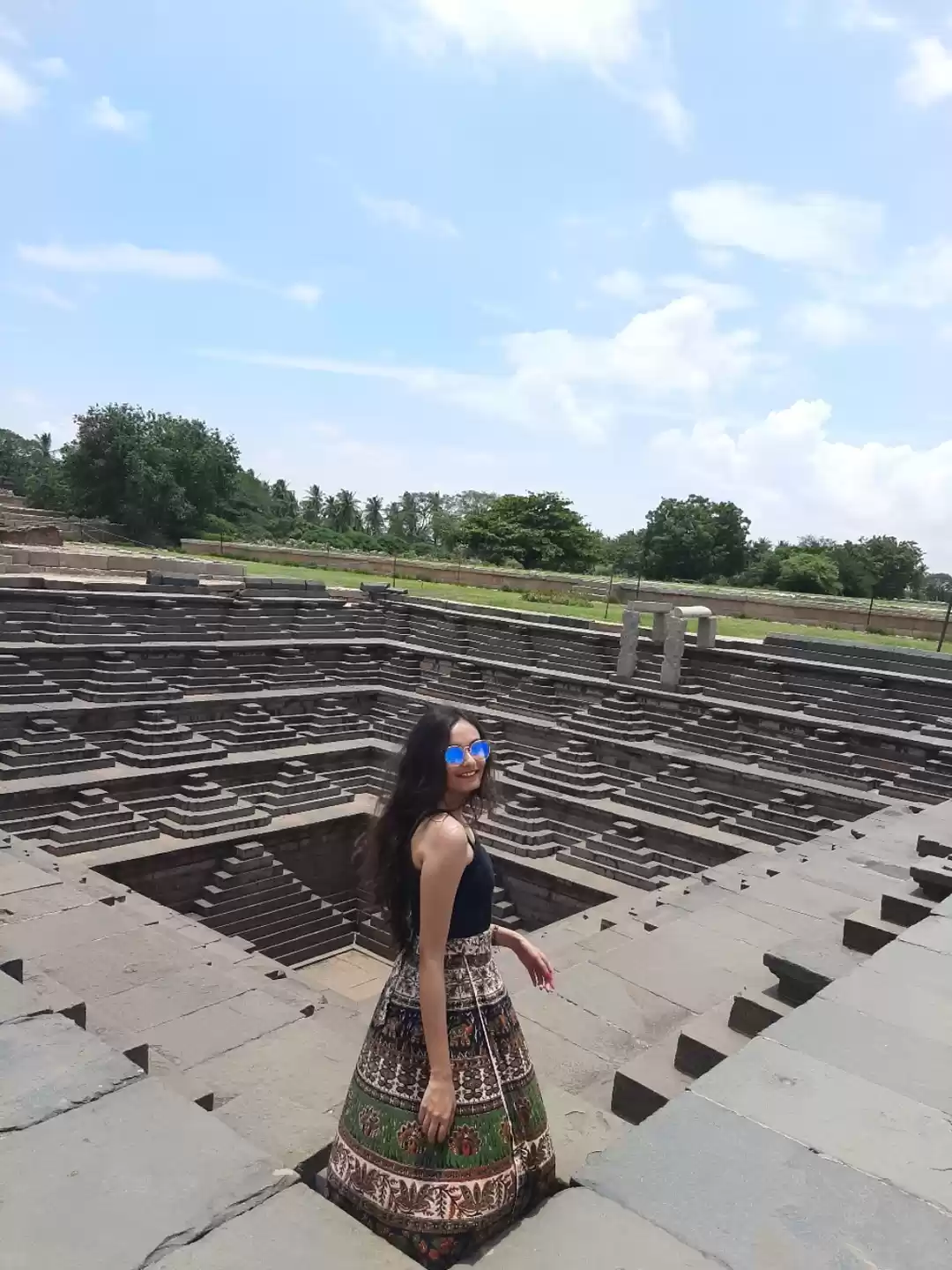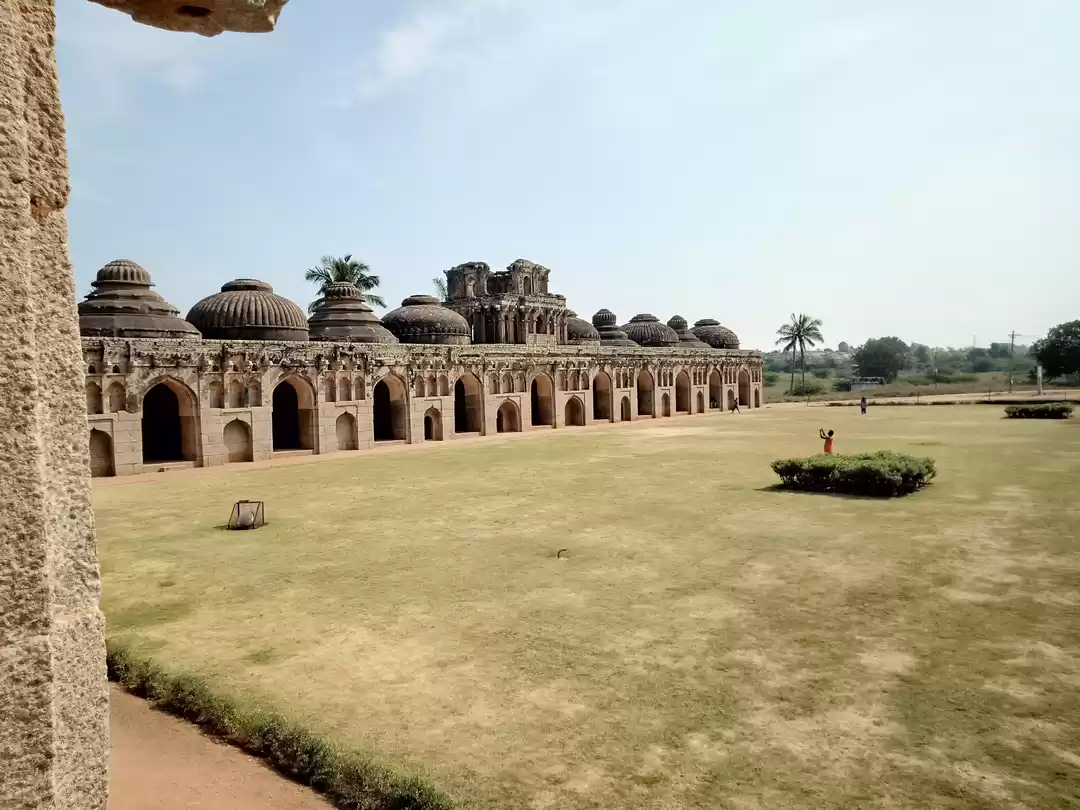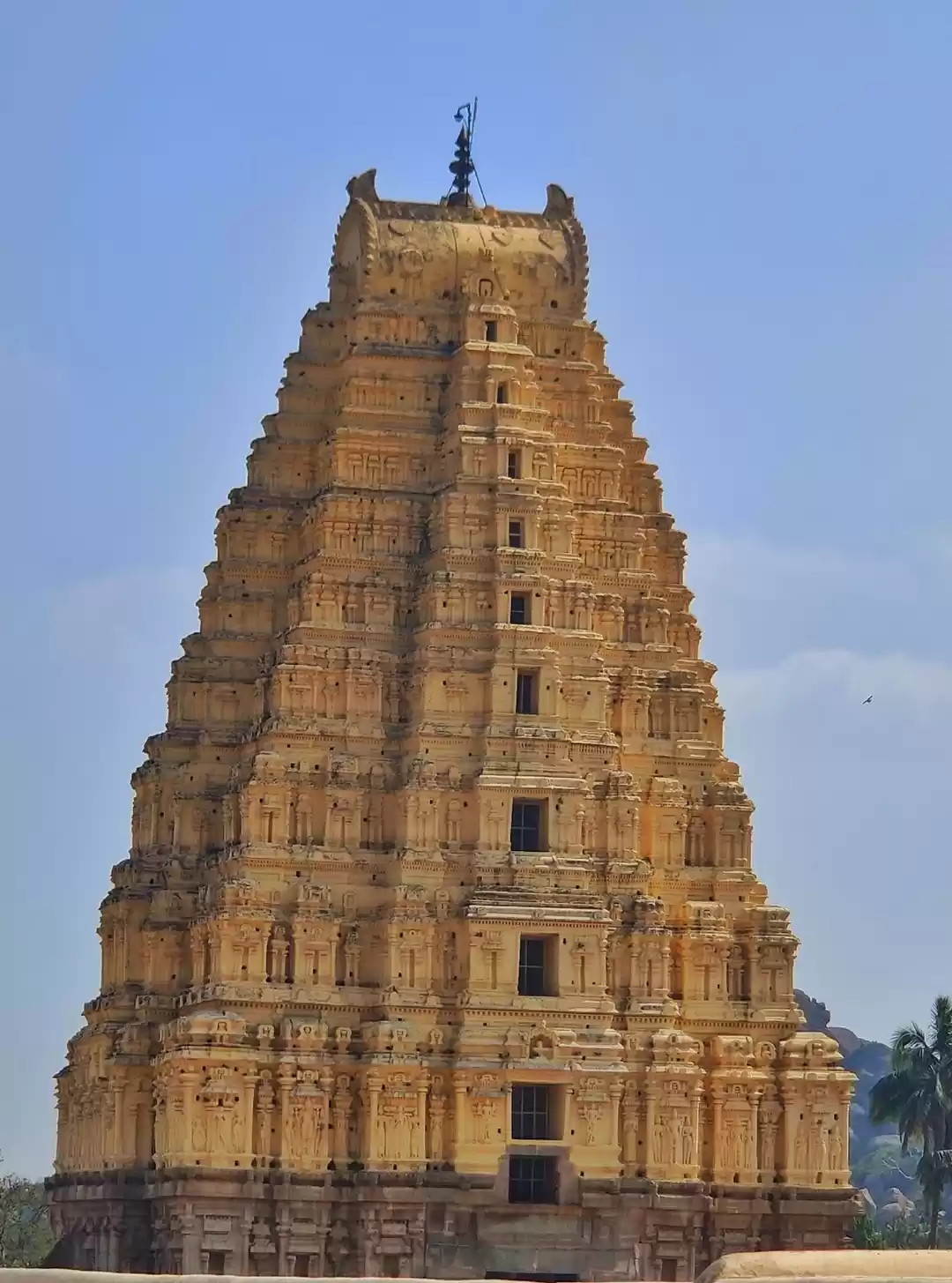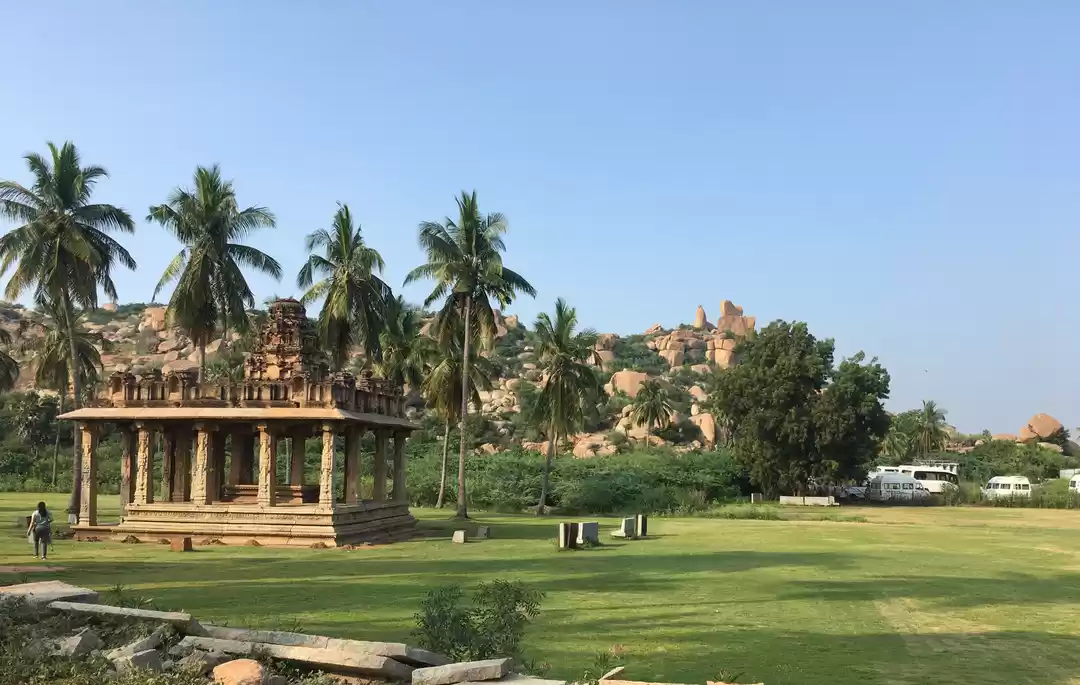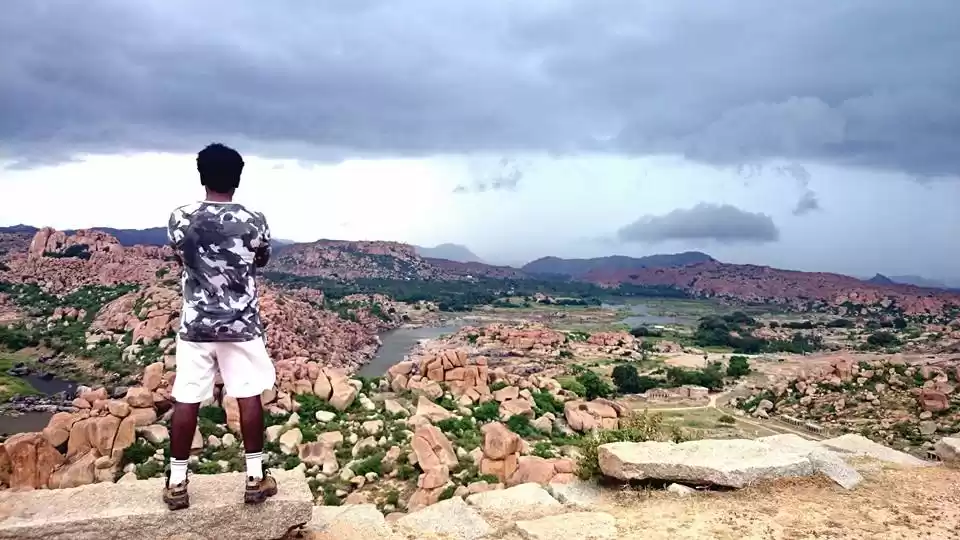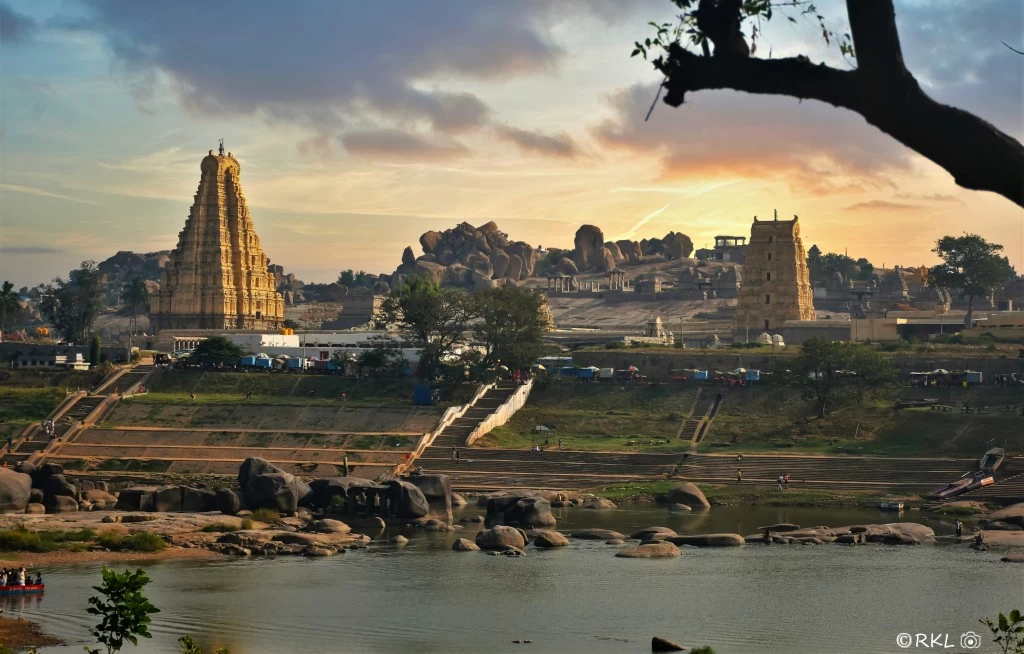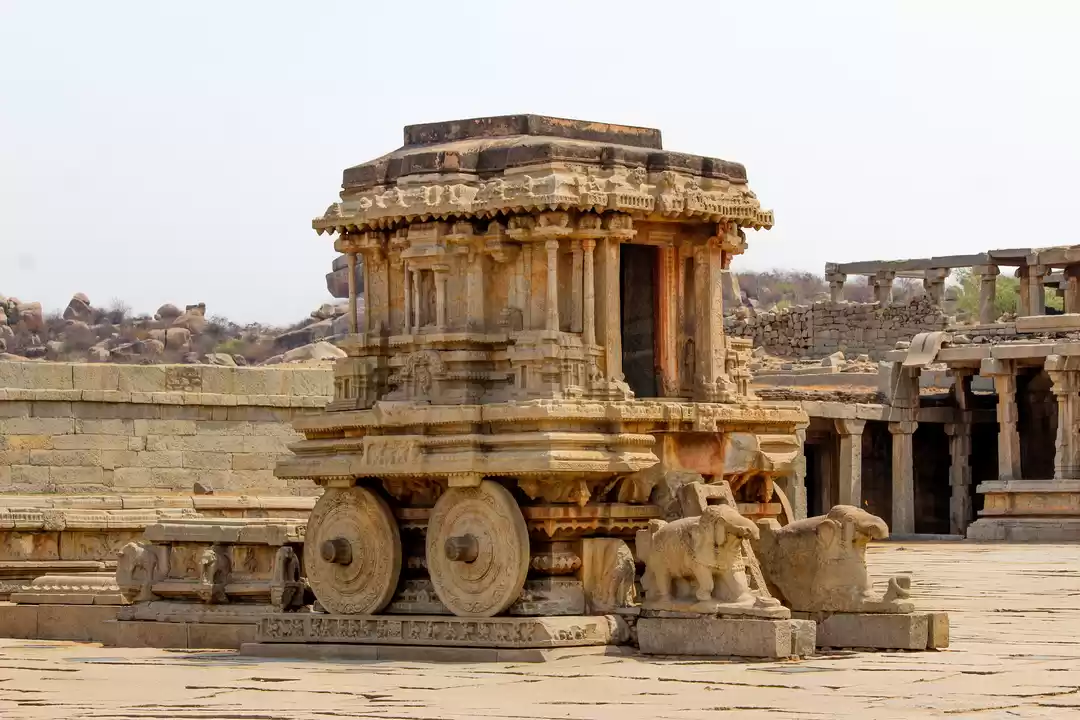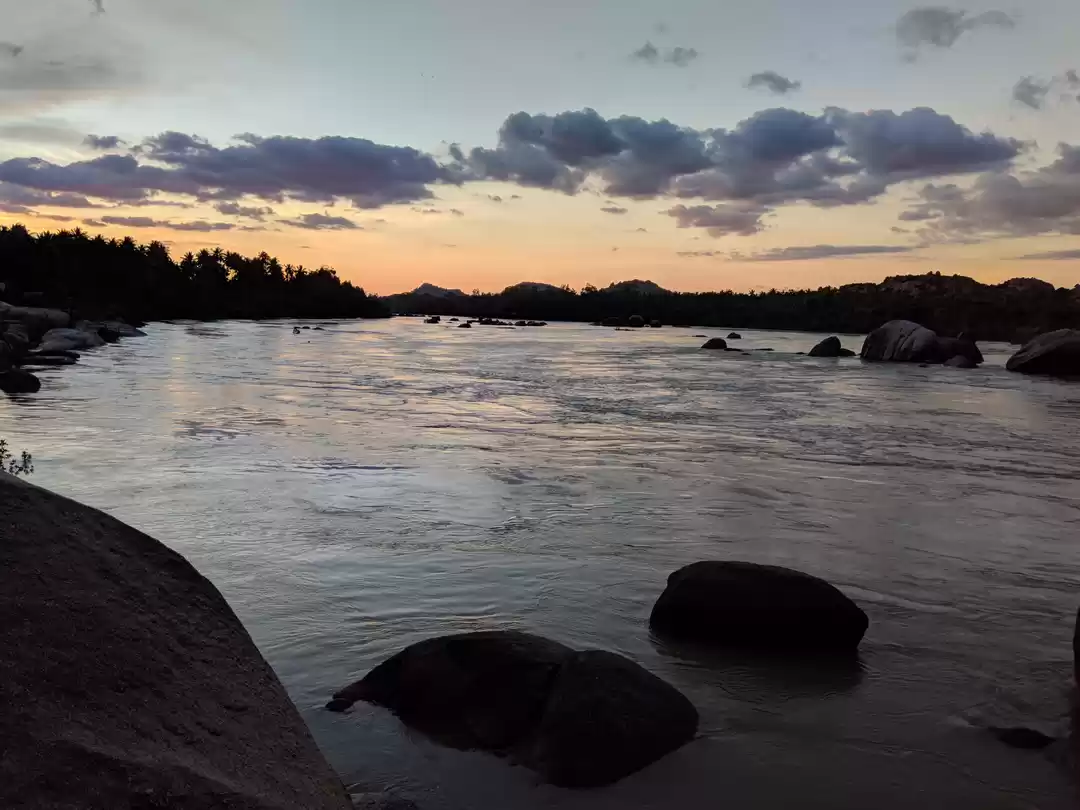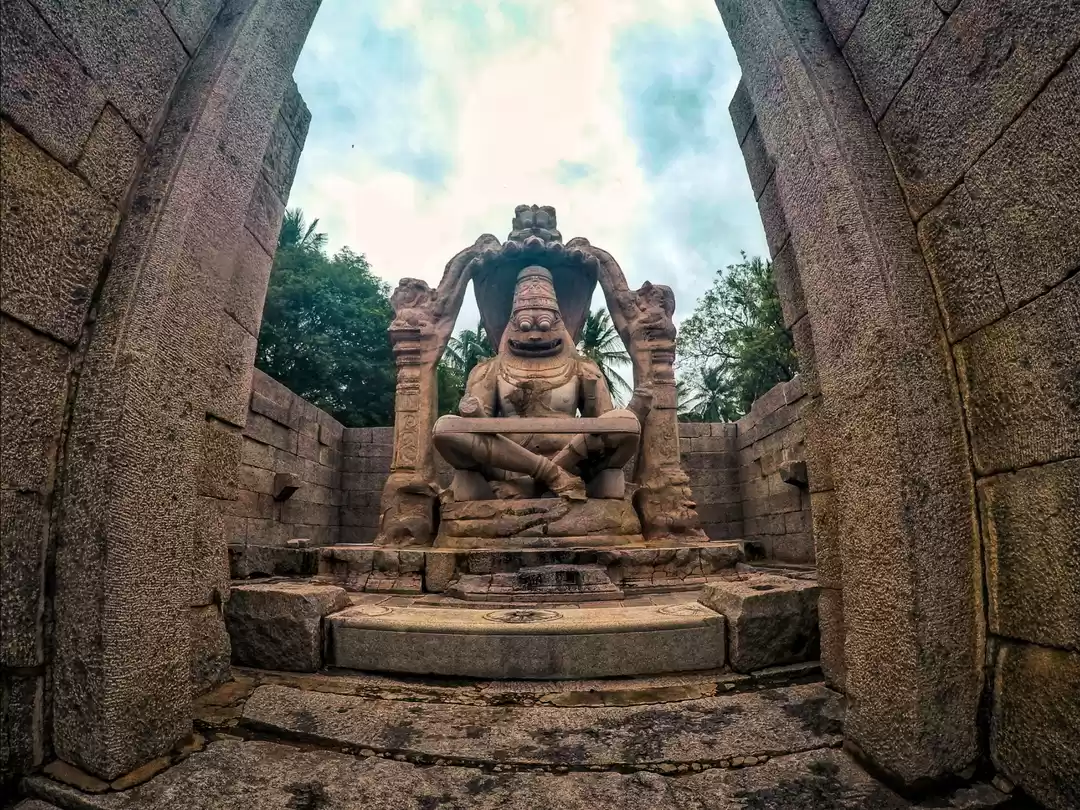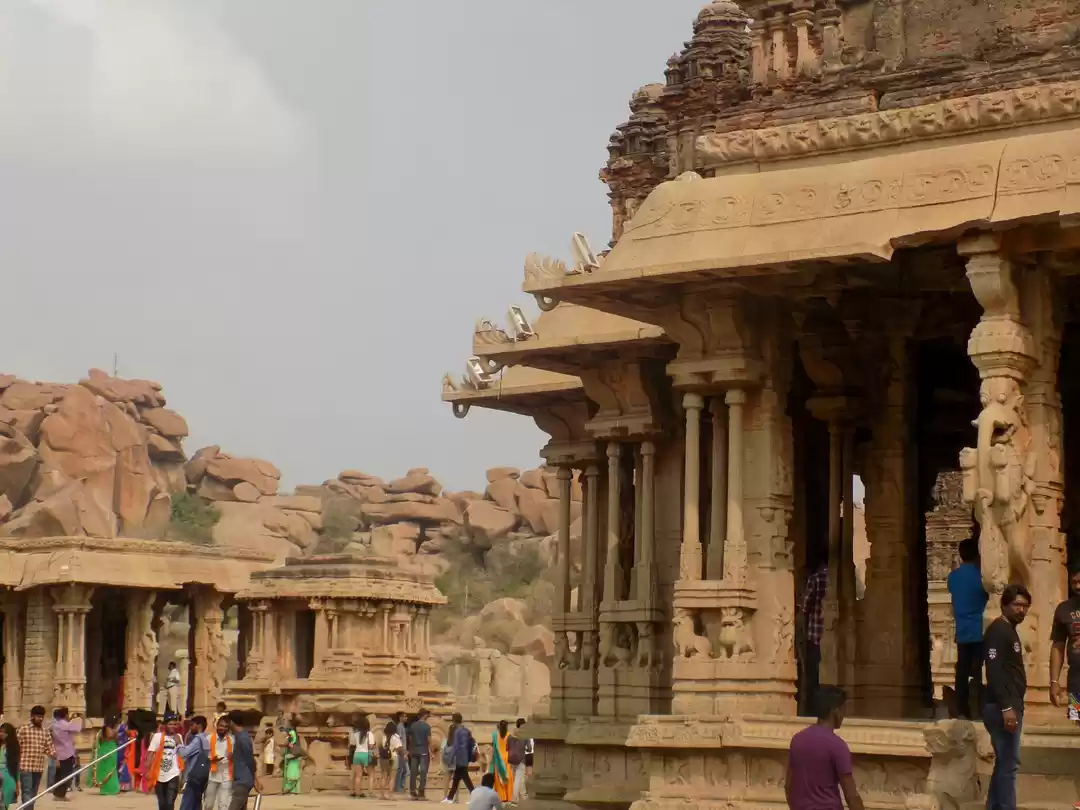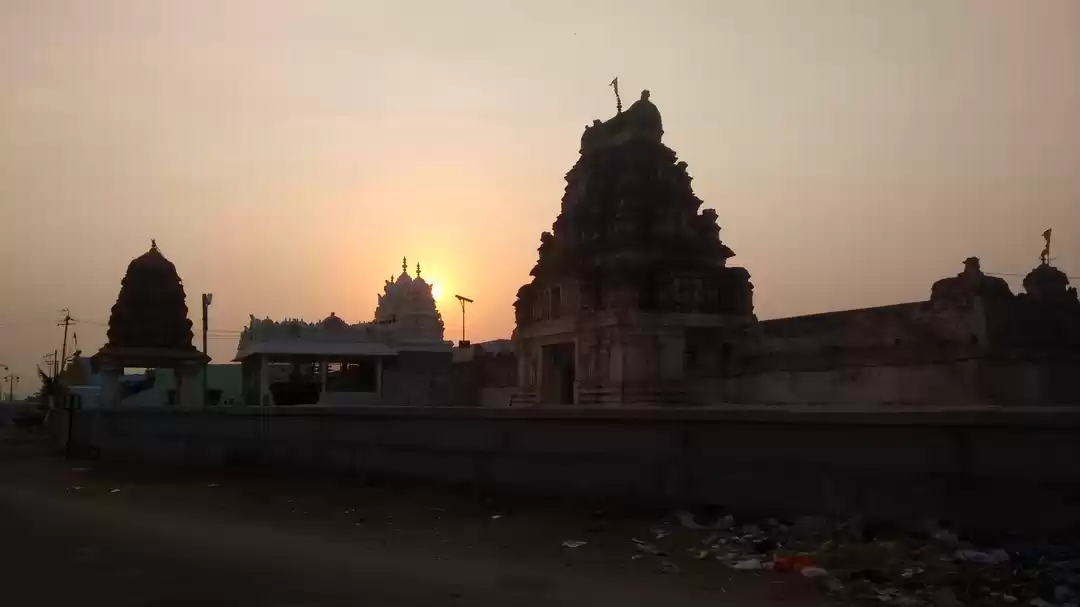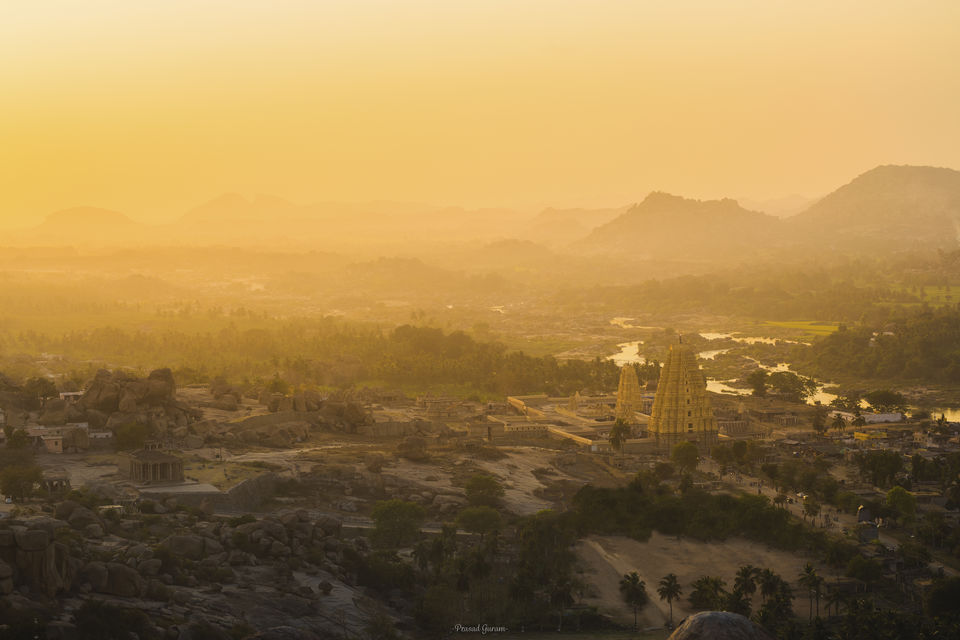
Hampi was on my bucket list for a very long time. As I was looking to visit this lost world, I read many books, watched vlogs but did not get time to visit this place. The only thing that was remaining was to experience everything that had been gathered. This place has everything to offer that can pull me towards it - massive landscape, full of boulders, ruins of a lost kingdom, architectural marvels.
Finally, the plan was made. Shubhangi was my companion, we met first at Kashmir The Great Lakes Trek(KGL). KGL was all about mountains, snow capped peaks, meadows, massive grasslands and as the name defines alpine lakes. Sticking back to the land of ruins, it was going to be a different experience this time.
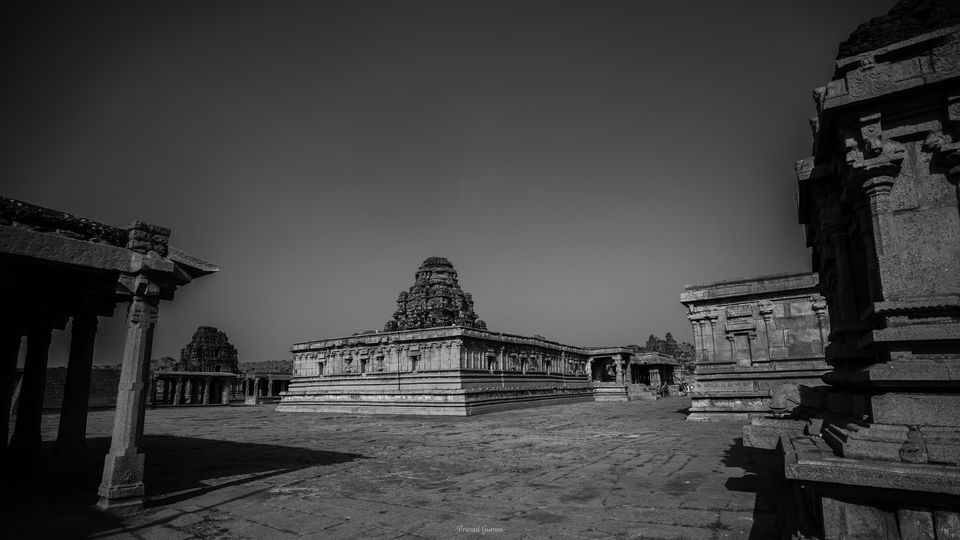
Hampi Location:
Hampi is a UNESCO World Heritage Site in India located near Hospet town in the Karnataka state, India. It takes approximately 14 hours to reach Hampi from Mumbai. Thus it can serve as a great weekend destination.
History:
Hampi is a land full of stories and it is worth the hype. Hampi is not just a city of ruins; it's a city of agony, pain, and royalty. Hampi - an ancient village in Karnataka, glorifies the story of the Vijayanagara Empire. And if you are a sucker for history, and love to explore new places and their culture, then Hampi is the right place for you.
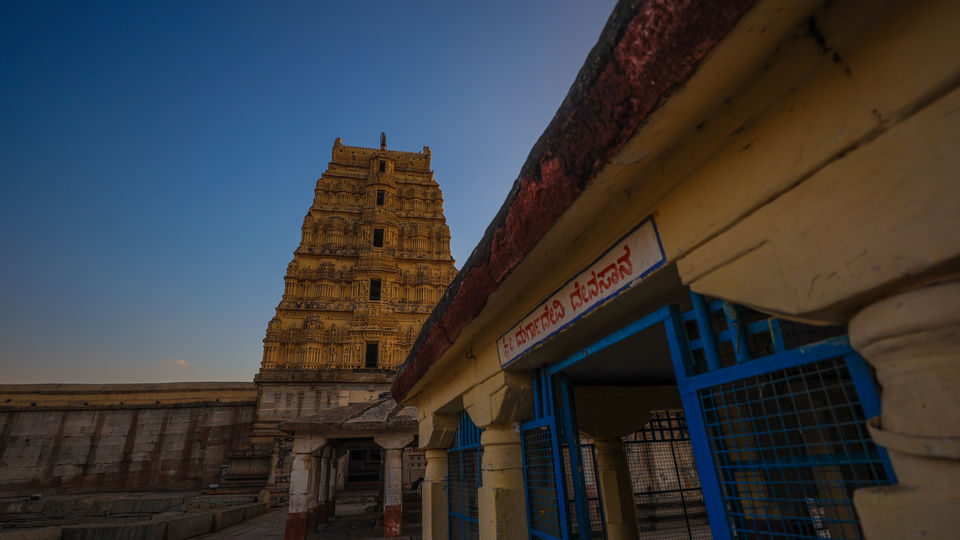
Among the attractions of Hampi are beautiful temples, ruins of palaces, remains of aquatic structures, ancient market streets, royal pavilions, bastions, royal platforms, treasury buildings... the list is practically endless. Hampi is a backpacker's paradise and at the same time a pilgrim's delight.
Hampi is also known as the Pampa Kshetra and Kiskinda Kshetra. These magical stories of Hampi are inexorably linked with the Hindu mythology.
According to mythology, it is said that Pampa was Brahma’s daughter who later married Shiva. The Lord was pleased with her devotion and wanted to grant her a boon. She wanted him as her husband. Lord Shiva had to give in to Pampa’s demand, but before marrying her, the Lord did penance at the Hemakuta Hills (He was already married to Parvati). And then it rained with gold on the hills. “Hema” is the Sanskrit term for gold and hence the hill came to be known as Hemakuta Hills.
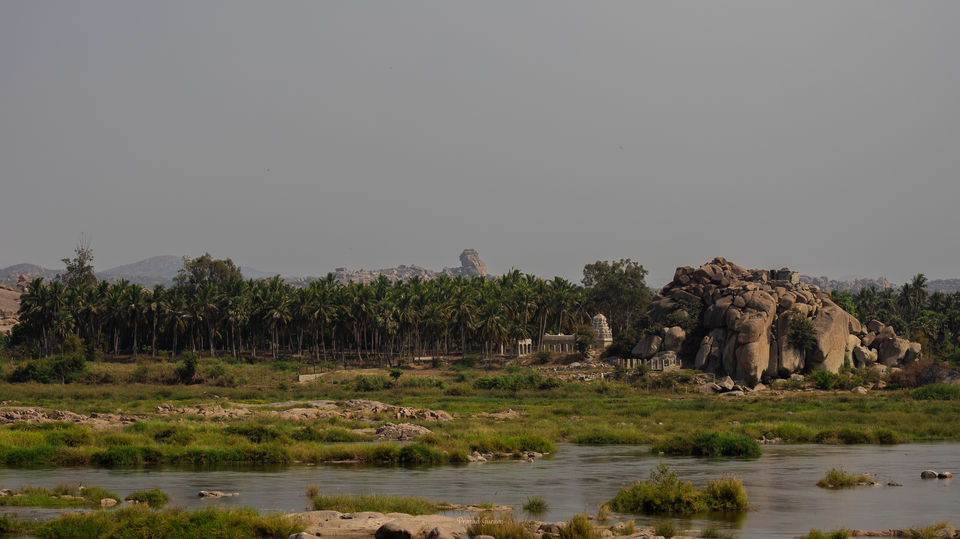
Hampi also has a great supporting background from Indian epic, Ramayana. It is believed that Hampi was a kingdom of Monkeys, before Vijayanagara Empire in pre-ancient age (around 1 CE) when the city was known as Kishkindha. According to this epic, Rama and Lakshmana had stayed when they had set out in search of Sita who was abducted by Ravana. You will also find several spectacular mountains that are said to be spots where Rama, Hanuman, Sugreeva and Vali stayed. Infact, it is believed that Anjaneya Hills was the birthplace of Hanuman, the faithful devotee of Lord Rama.
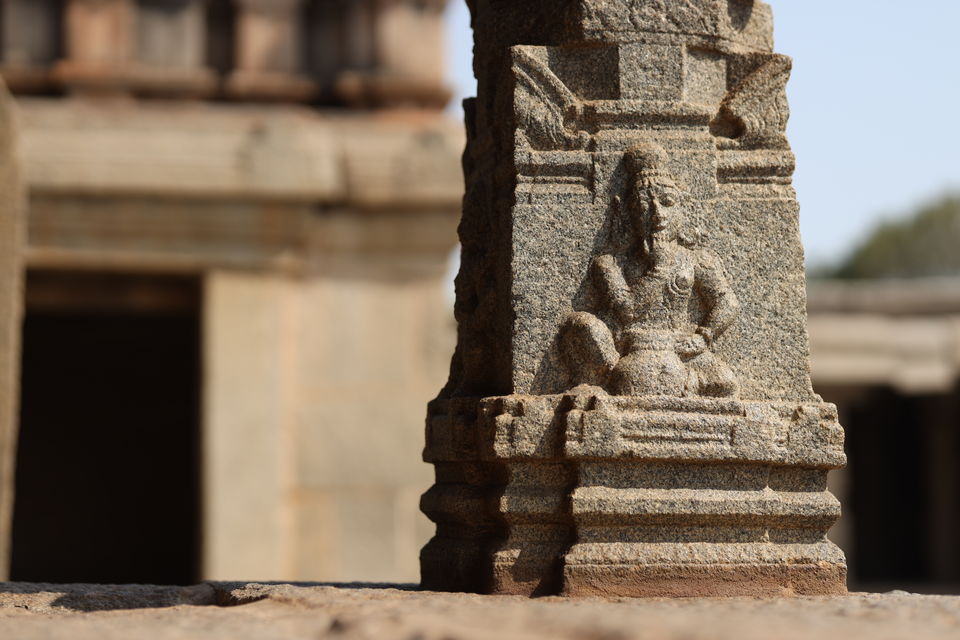
These are all mythological stories around Hampi. The history starts with the popular folklore that two local chieftains Hakka and Bukka were on a hunting expedition when they viewed an unusual sight. A hound was chasing a hare which was normal. But suddenly, the hare became all-powerful and started chasing the hound. Hakka and Bukka reported this strange incident to their guru (master) Vidyaranya. The Guru could foresee the place to be special and asked his disciples to shift their local capital to that very place.
This was the start of an empire that went on to become one of the richest. In a span of over 200 years, a total of four dynasties ruled Vijayanagar that is also called the City of Victory. At one point Hampi was also one of the biggest trading centers of the world. Vijayanagar brought a lot of wealth, fame and splendor to Hampi.
Hampi was also rich in art and architecture. The rulers who ruled the region were great lovers of religion and art and hence most Kings put in a lot of efforts to set up magnificent empires using one of the best architectural designs, which is for you to see now. Hampi had reached its prime during the rule of Krishna Deva Raya who ruled this city between 1509 and 1529.
However, Hampi succumbed to the attacks by five Deccan Sultans called Bidar, Bijapur, Ahmednagar, Golconda and also Berar. They attacked Hampi in 1565 and looted it for a long period, approximately six months. An attack of six months long definitely had to bring such massive destruction that it would have taken them forever to rise again. And we can still see ruins everywhere in Hampi. We can only imagine the massiveness, royalty and beauty of those huge structures by just looking at the ruins.
Why so many boulders ?
The boulders in Hampi have the composition of granite. They belong to what is known as Eastern Dharwar Craton. A craton is a piece of the Earth’s crust that has existed as a solid, without being modified by plate tectonics, since they were formed. These boulders are highly metamorphosed.
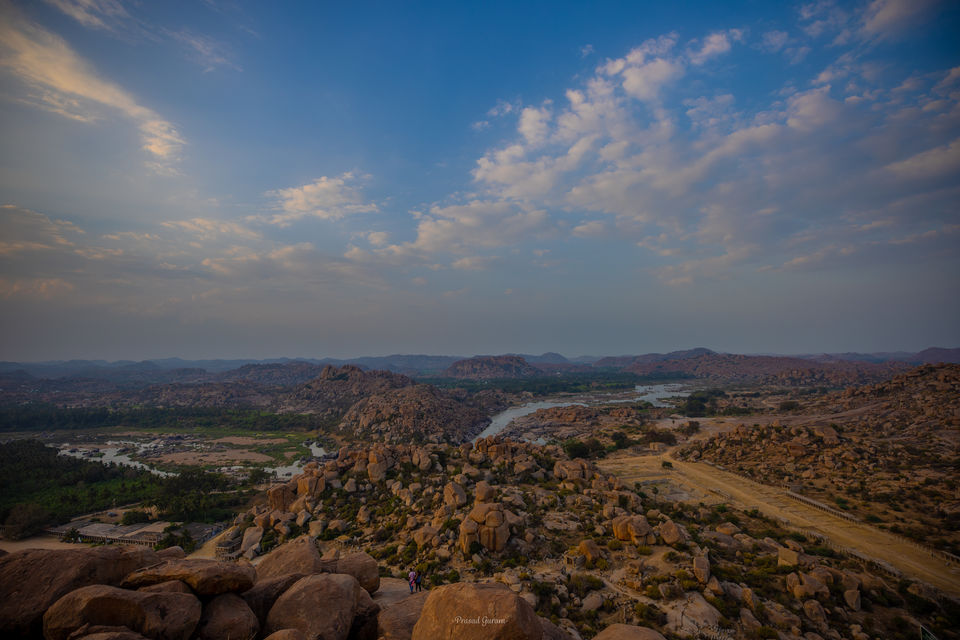
However, Hindu mythology has a more dramatic and colourful answer to the boulders of Hampi. The place was believed to be Kiskinda and there was a battle for power between the two monkey brothers Bali and Sugreeva. In the fierce battle between the two brothers, the army threw boulders at each other and thus these boulders were piled up all around Hampi. Well, almost everything in India has a mythological essence linked to it.
Day 1
We reached at around 11 am, looking at the hot weather in the month of March we decided to spend afternoon in the guesthouse and then left to view the sunset.
Virupaksha Temple:
One of the most prominent structures of Hampi is the Virupaksha Temple, located on the southern banks of the Tungabhadra River. Standing tall near the market area, it is not easy to miss the temple. It is an important place of worship for all the Shiva worshippers. This was the first place where we encountered the gang of monkeys. They are everywhere in Hampi.
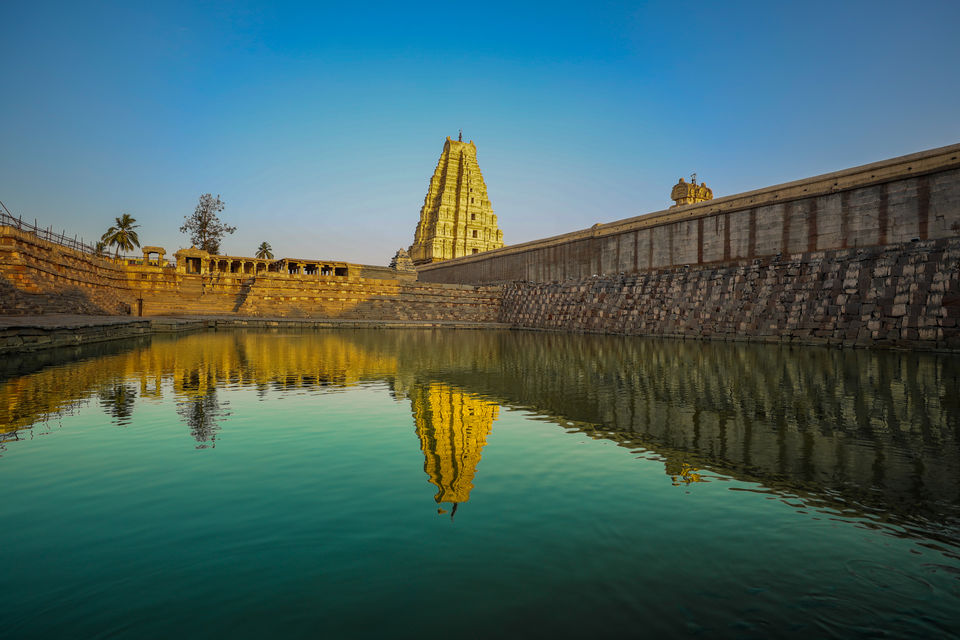
Apart from these monkeys another giant life lives in this temple complex, Lakshmi, the elephant. She is the mascot of the Virupaksha Temple. It is a treat to get her to bless you with her trunk. She does so if you feed her a banana or put ten rupees in her trunk. Beware of the monkeys who will try to grab the bananas.

* Timing: From morning to 8 pm on all days of the week
* Entry Fee: Rs.25 per person
* Photography: Allowed except the Garbhagriha (inner sanctum)
* Visit Duration: About 1 to 2 hours
Hemakuta Hills:
The hill is just near the Virupaksha Temple. This hill provides a gorgeous sight of the Virupaksha Temple and the other ruins of the Vijaynagar empire. The hill itself has a large number of ruins of temples, archways and pavilions. This is one of the places to view the splendid sunsets at Hampi.
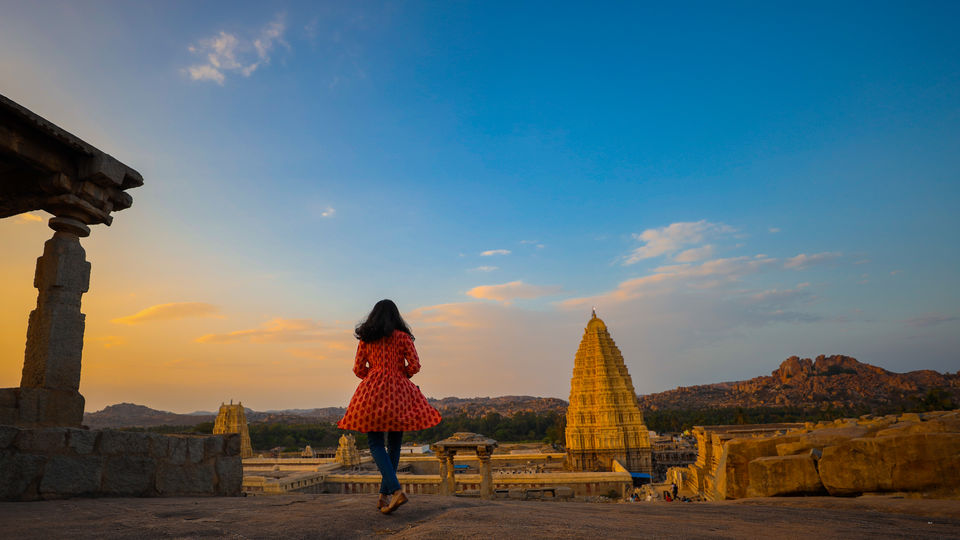
Like all places in Hampi, this place has a certain unique charm to it. Sunsets here are always vivid and beautiful. Once the sun sets guards take-over this hill and evacuate it before it becomes too dark.
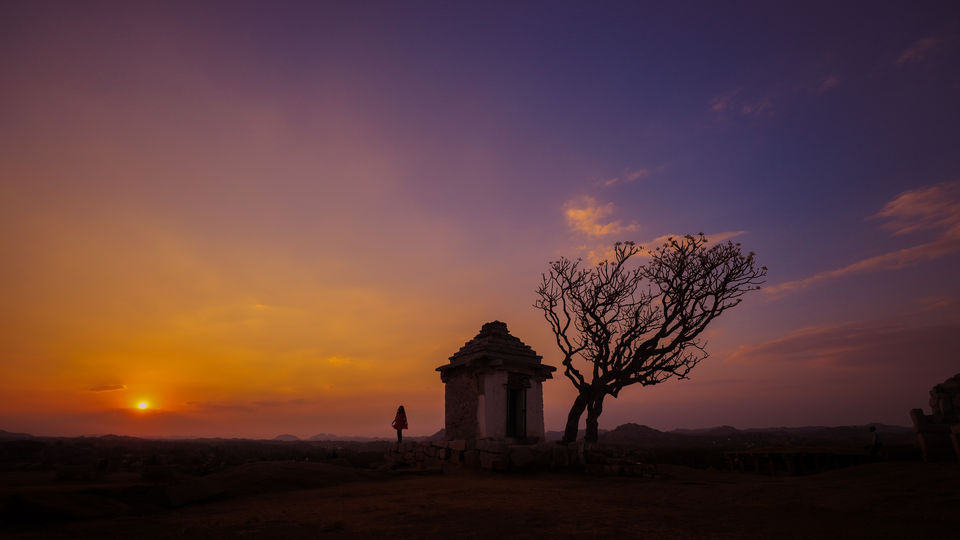
* Timing: From morning to dusk on all days of the week
* Entry Fee: No entry fee required
* Photography: Allowed
* Visit Duration: About 3 to 4 hours
After getting down from Hemakuta Hill we headed to eat something in Gopi’s Rooftop restaurant. It gives you a lovely view of Virupaksha Temple and it’s Manmatha Tank. Shubhangi and I decided to wake up early the next day and climb up the Matanga Hill before the sun rises.
Day 2
As we were not fixed onto any itinerary, we could shape our plans anytime. And guess what, as a result, I woke up at 8 am and missed the sunrise. What a start? Since we were staying in the city center, it was convenient for us to walk to most of the places.
Kadalekalu Ganesha Temple :
This temple is situated on the north-eastern slope of the Hemakuta Hills. Here a giant statue of Lord Ganesha is present that is carved out of a single stone. The belly of this statue resembles a Bengal gram (Kadalekalu, in local language) and hence the name. The temple hall is decorated with tall and slender granite pillars standing strong in the hall. The pillars are decorated with various mythological characters and themes carved on them.

* Timing: Open on all days of the week from 6:00 AM to 6:00 PM
* Entrance Fee: No entry fee
* Photography: Allowed
* Visit Duration: 1 hour
Sasivekalu Ganesha :
Sasivekalu Ganesha Temple is a huge statue of Lord Ganesha, again carved out of a single block of rock. It is one of the major landmarks in Hampi. The Ganesha is seen in a half-lotus position with four arms. The right and left hand at the upper side holds a goad and a broken tusk. The top right hand of the statue holds a sweet (modak) the left hand is portrayed with a noose.

* Timing: Open on all days of the week from 6:00 AM to 6:00 PM
* Entrance Fee: No entry fee
* Photography: Allowed
* Visit Duration: 1 hour
Krishna Temple :
The Krishna Temple in Hampi, Karnataka is a notable one with unique architecture. This temple is dedicated to Lord Balakrishna, the form of Lord Krishna when he was an infant. The main idol of the temple is that of Lord Balakrishna which is now on display in the State Museum at Chennai. The temple campus is adorned with pillared halls and many small shrines. This is one of the rare temples which have epics inscribed on the tower walls.
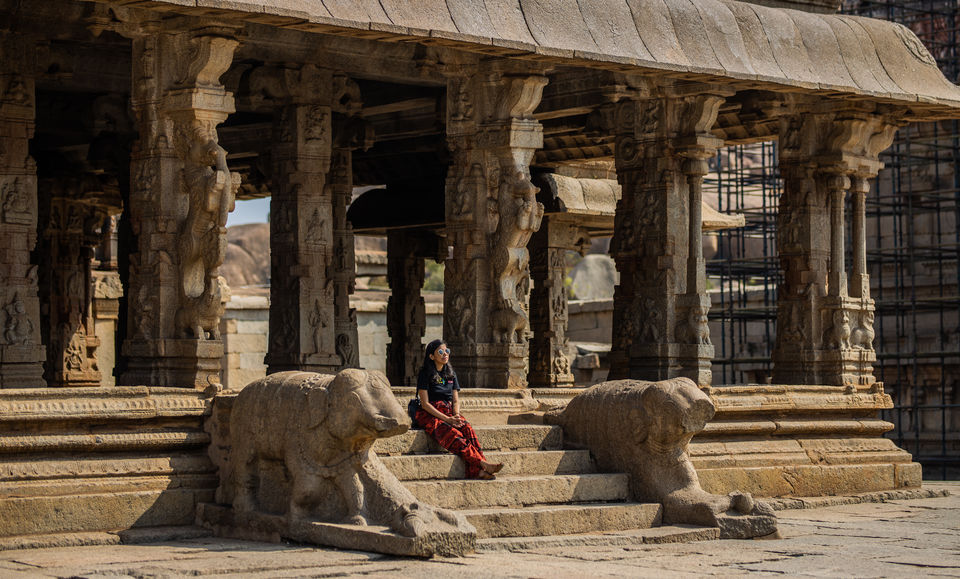
* Timing: Open on all days of the week from 6:00 AM to 6:00 PM
* Entrance Fee: No entry fee
* Photography: Allowed
* Visit Duration: 1 hour
The Lakshmi Narasimha Temple :
The Lakshmi Narasimha statue is one of the most imposing sculptures found in the ruined town of Hampi. This statue and the temple housing of the statue were built in the year 1528 A.D. during the rule of King Krishnadevaraya.
The original sculpture had a small figure of Goddess Lakshmi, consort of Narasimha, sitting on his lap. The gigantic statue was vandalized and mutilated during the raid by the Mughals that led to the fall of the Vijayanagara Empire.
The limbs of Narasimha’s statue were broken during the attack and the figure of Lakshmi was separated from that of Narasimha. In the process of destruction, they couldn't separate the right hand of Goddess Lakshmi and even today the broken hand of the Goddess can be seen resting on the back of Narasimha (we can still see that unbroken hand on the right). Now the damaged statue of Lakshmi resides at the Archaeological Museum at Kamalapura. After this destruction, this statue is known as Ugra Narasimha (Angry Narasimha).

* Timing: 6:00 AM to 6:00 PM on all days of the week
* Entry Fee: No entry fee
* Photography: Allowed
* Visit Duration: About 1 hour
Badavilinga Temple :
Situated right next to The Lakshmi Narasimha Temple, we have this giant Badavilinga Temple. This temple has the largest monolithic Shiva Linga in Hampi. We can clearly see a three eyes mark drawn on it in a line carving. The three eyes mark depicts the three eyes of Lord Shiva. The beautiful Linga is made of black stone. The huge Shiva Linga of the Badavilinga Temple is situated inside a small stone chamber, that has no ceiling. During the day time, sunlight enters through the opening in the ceiling and floods the Shiva Linga with light. The base of the Shiva Lingam is submerged in water.
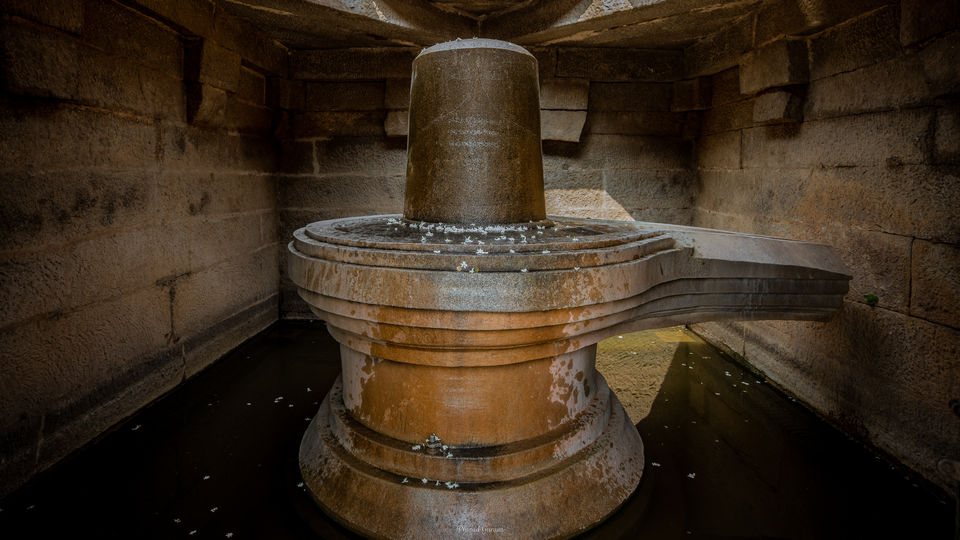
* Timing: 6:00 AM to 6:00 PM on all days of the week
* Entry Fee: No entry fee
* Photography: Allowed
* Visit Duration: About 30 mins
That was it, the sun started to become harsh and we started to lose our energy. All these nearby temples we could cover by walking. And places that couldn’t be covered by walking, we had hired an auto for the day. The auto driver took us to some unexplored places as well. So we had to shell out Rs 300 for an entire day; which according to me is a good deal.
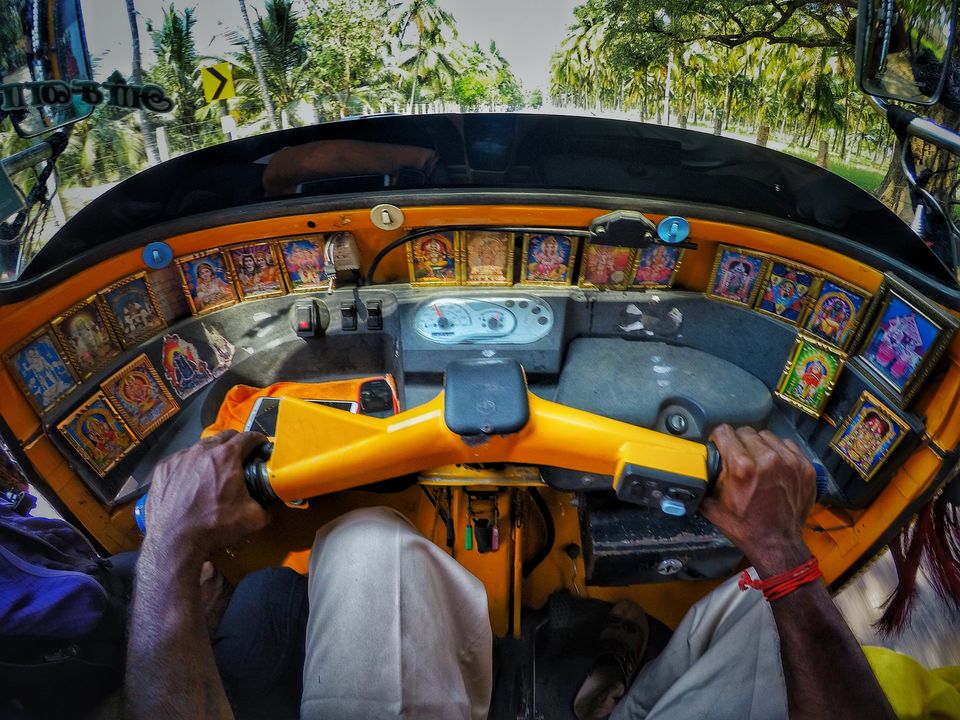
Apart from this, when it comes to the monuments, I had to purchase a ticket at Vittala Temple, which cost me Rs 50. But the ticket was valid at the Lotus Mahal as well. We went to these places on International Women’s Day, so Shubhangi got free entry to these monuments.
Prasanna Virupaksha or Underground Shiva Temple :
Prasanna Virupaksha temple is one of the oldest temples in Hampi. An interesting fact about the Prasanna Virupaksha temple is that it is located a few metres below the ground level. Another thing to note is that the sanctum of the temple remains submerged under stagnant water throughout the year. During the monsoon season, extending from June to August, the water level rises inside the temple and submerges the floor of the maha mantapa and other mantapas. The inner sanctum of the temple once had an idol of Lord Shiva, but today there remains just an empty pedestal.
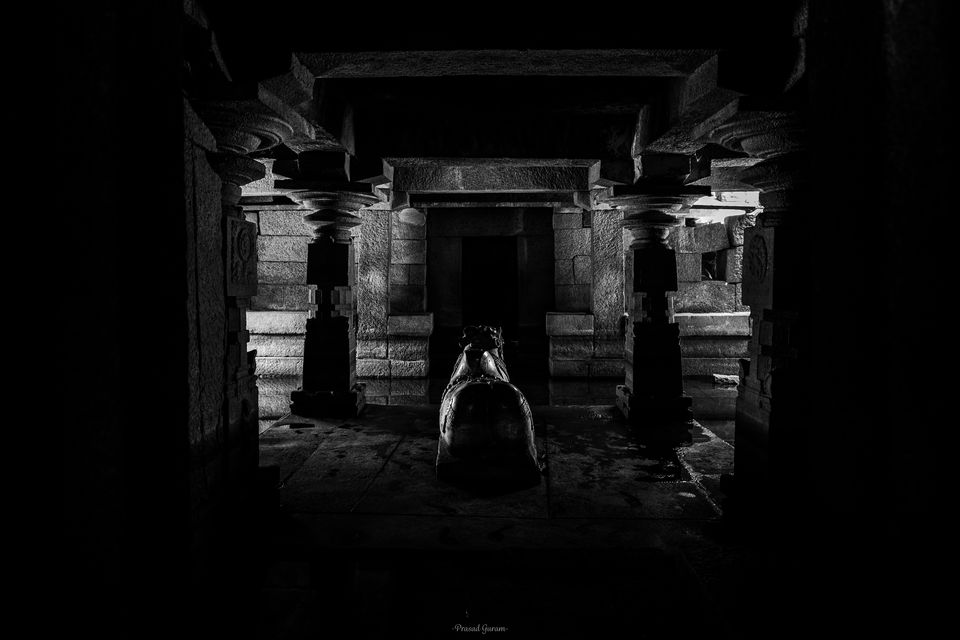
We could only go till the monolithic Nandi as there was water ahead. As this temple is located below the ground level it was a little dark inside and now it has become a home of hundreds of bats.
* Timing: 6:00 AM to 6:00 PM on all days of the week
* Entry Fee: No entry fee
* Photography: Allowed
* Visit Duration: About 45 minutes to 1 hour
Lotus Mahal :
The Lotus Palace or Lotus Mahal is one of the most beautiful pieces of Indo-Islamic architecture found at Hampi. Enclosed within the Zanana Enclosure, this palace was meant for the ladies of the royal court. The architecture is unique with the capability of cooling the palace with a series of water pipes and sprinklers. And it is one of only a handful few astonishing buildings in Hampi that had not been damaged or destroyed in the attacks on the city.

* Timing: Open on all days of the week from 8:00 am to 6:00 pm
* Entry fee for adults: INR. 10 for Indians and INR 250 for foreign tourists
* Entry fee for children: Entry is free for children under 15 years
* Photography: Allowed (no extra charges levied)
* Visit duration: 45 mins approximately
Elephant Stable :
The next structure situated in the Lotus Mahal complex is The Elephant Stable. The Elephant Stable in Hampi is an impressive structure that was used to provide shelter for the royal elephants of the Vijayanagara Empire. This is a long building with a rectangular shape. The building has a row of eleven huge domed chambers. Each chamber is huge enough to accommodate two elephants at a time. We could only imagine how the place looked in its prime.
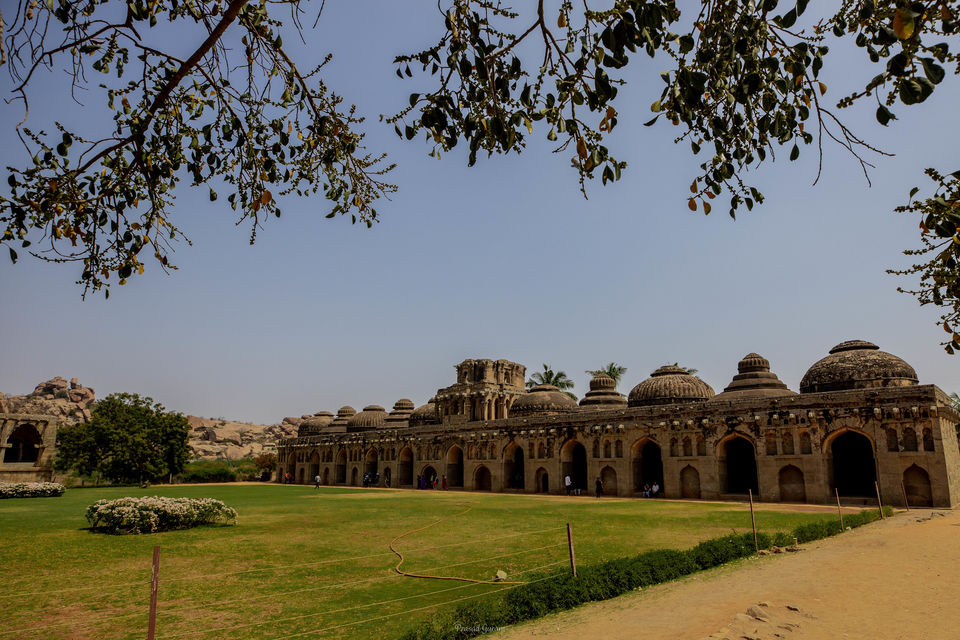
Pushkarani :
The Pushkaranis in Hampi are the sacred water tanks that are attached to the temples. Most of the major temples in Hampi have a pushkarani built near them. The sacred tanks were related to various rituals and functional aspects of the temples and the people surrounding the temples.
The security guard out here won't allow you to use the steps down. Therefore, just good for a quick snap.
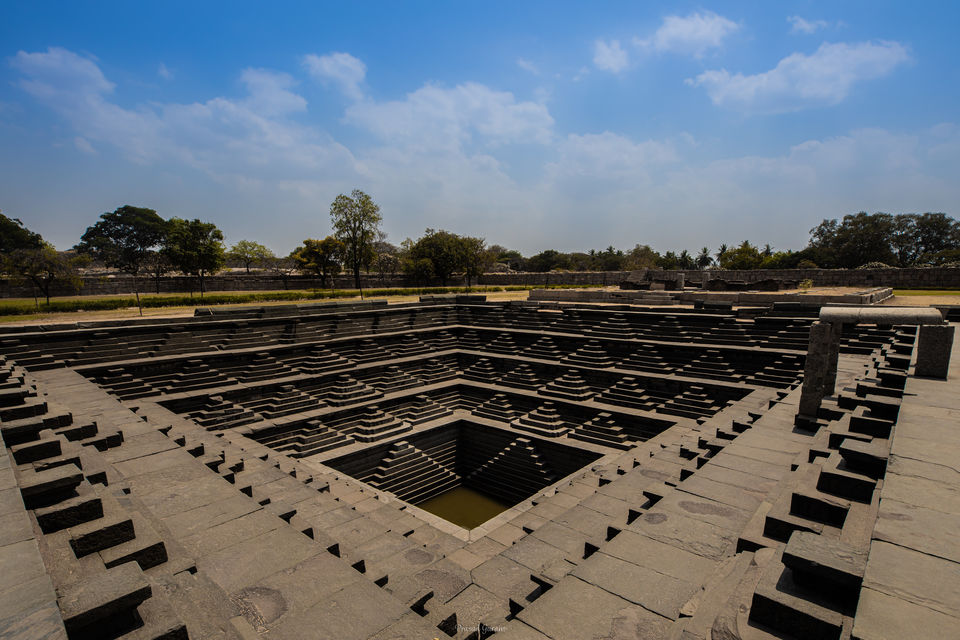
* Timing: From morning to evening on all days of the week
* Entry Fee: No entry fee
* Photography: Allowed
* Video Camera: Allowed
* Visit Duration: About 20 to 30 minutes
After roaming so many places hunger striked and our auto driver took us to this amazing Green Restaurant and Catering. The place is very beautiful in the middle of fields and greenery. Apart from the normal tables and chairs, there is also a more cosy sitting area, where you can sit on the ground and have your food. The food here is delicious, which made us so content and we managed to grab a quick nap here without impacting the next step.
Vijay Vitthala Temple :
The Vijaya Vittala Temple is the most extravagant architectural wonder of Hampi. The temple is spread across a large complex where there are numerous halls, pavilions and gateways. Outside the main temple complex, there are other ruins also. Seems like an entire town had been set up there. In fact, it is the remains of the ancient town of Vittalapura.
We took a guide before entering the temple. You can get a guide for a mere INR 100. I wish I remembered my guides name, I would have definitely recommended him. This temple is not a living temple but still has so much history to it. Little things like carvings, structure and almost everything here has a story related to it. Hampi has a lot of ruins, hence this is one of those places where hiring a guide to understand history is a must. After our temple tour was over, we were stunned by the meaning every little thing hides.

* Timing: 8:30 AM to 5:00 PM on all days of the week
* Entry Fee: You can enter here using Lotus Mahal’s Ticket
* Photography: Allowed
* Video camera: Allowed
* Visit Duration: About 2 hours
Matanga Hill :
This was the last spot of our ride. Heard many things about this place and many recommended. Surely can’t take a chance to miss this place. It takes a hike of about 15 mins to reach the hill top. On the hilltop we have Veerabhadra Temple. The roof top of the Veerabhadra Temple is the ideal place to view sunrise and sunset in Hampi. What a view, literally jaw dropping. The rooftop gives you 360° panoramic view of this ancient town.
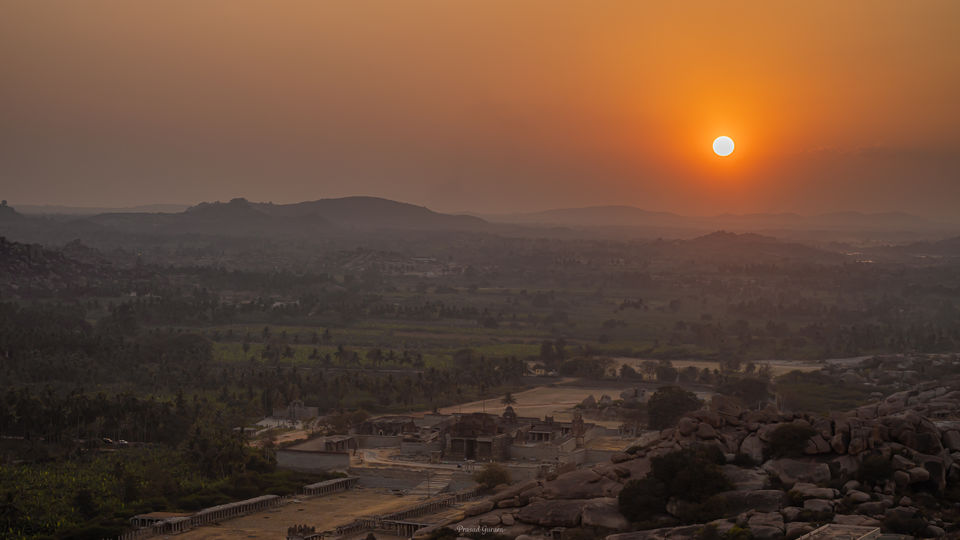
Looking down from here you can see every monument, Virupaksha Temple, Tungabhadra River, Krishna Temple, Lakshmi Narasimhs Temple, Badivallinga Temple, Kadalekalu and Sasivekalu Ganesha Temple almost everything. The setting sun spreads it’s golden rays all over this place and then the time stops ticking. While you are lost in this phenomenon a thought comes to your mind, what if we could go back in time and see all these things alive? Marvellous.

After dusk, a guard ensures that no one waits back on the hill.
* Timing: 5:00 AM to the sunset on all days of the week
* Entry Fee: You can enter here using Lotus Mahal’s Ticket
* Photography: Allowed
* Video camera: Allowed
* Visit Duration: Take your own time
Upon completing this long day it was time for dinner. We headed to the most famous Mango Tree restaurant. This place servers only vegetarian food. Do not forget to order their iconic South Indian Thali. It is pocket friendly place.
Hoping to wake up early and go to Matanga Hill for the sunrise we went to bed.
Day 3
And the next morning again the same story, we missed the sunrise. For breakfast, we went to Gopi’s restaurant. Both of us decided to go on the other side of the river today, Hippie Island.
Unfortunately, all cafes, restaurants and shopping markets were demolished by the forest department 6 days before of our trip. We couldn’t enjoy the lazy life which was there in Hippie Island. Barring that we still had Anjaneya Hill to see on the other side.
We left for the fairy point of the Tungbhadra River to get a fairy for the Hippie Island. As we reached there, we see this giant Lakshmi here, enjoying her favourite time. It was her bathing time. Obeying her Mahout's instructions she lied down in the river, turning sideways and putting her little trunk up above the water, while he started cleaning her up with the scrub and soap. Her royal bath went on for atleast an hour.
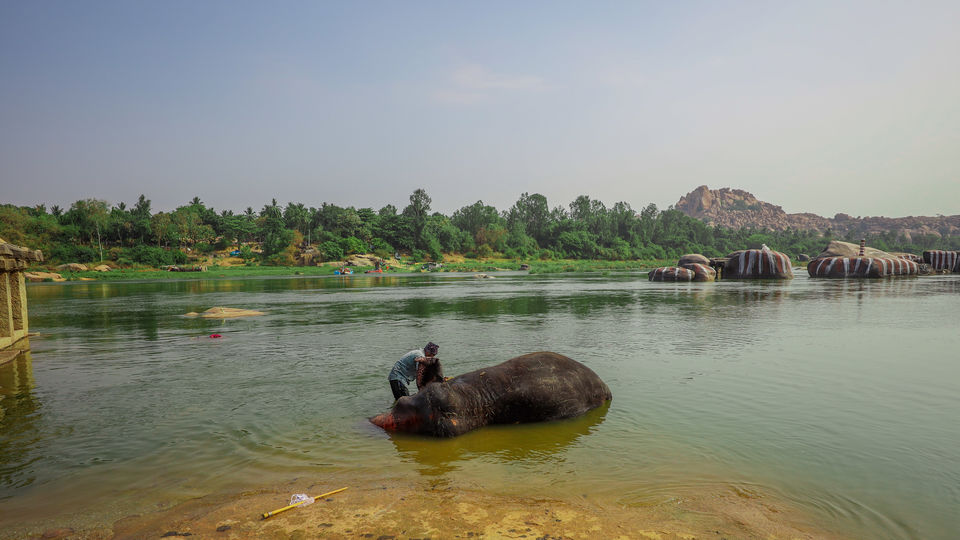
And we stayed there admiring her without worrying to get on the fairy for the Hippie Island. Finally we got on the fairy and the fare was INS 20 per person. It took less than 5 mins to cross the river. We hired a scooty to roam around. Which was another INR 350 including the fuel.
Anjaneya Hill :
Anjaneya Hill (Anjani Parvat) is considered to be the site of the monkey kingdom Kishkindha mentioned in the epic Ramayana. It is believed that Lord Hanuman was born at this place. One has to climb more than 550 steps to reach the summit of the hill.
The main attraction is the view of the surrounding that the hill offers. The sight of the valley and the Tungabhadra River flowing below offers a mesmerising sight.
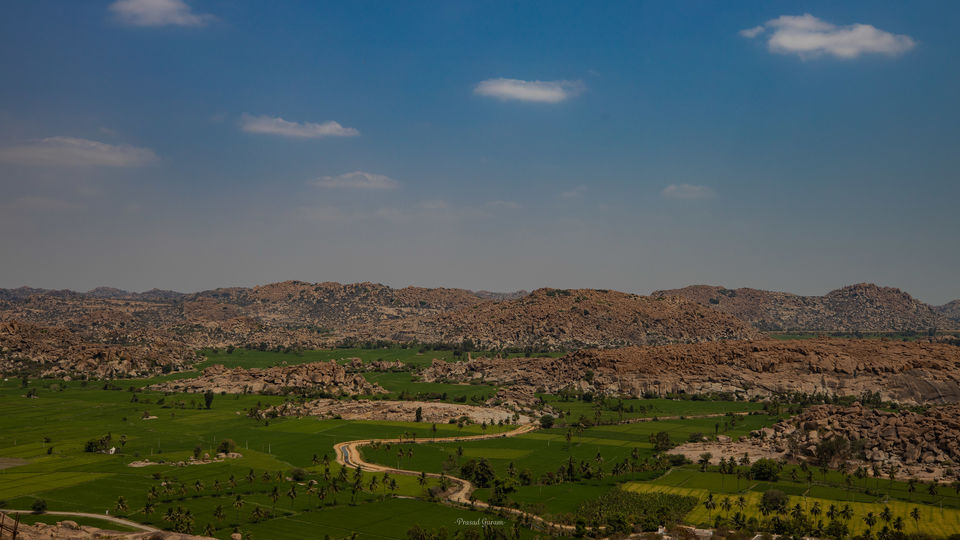
* Timing: Open 24 hours
* Entry Fee: No entry fee required
* Photography: Allowed
* Video camera: Allowed
* Visit Duration: 2-3 hours
To our surprise, The Laughing Buddha Cafe was open in the Hippie Island. This restaurant is located on the river banks and provides Indian style relaxed seating. The menu also has vast variety of dishes listed on it. You can lounge on cotton mattresses and have some nice food. It was my quick nap time after the delicious lunch.

The time was to move towards our next destinations, Chintamani Temple in Anegundi and Sanapur Waterfalls. Both places were not worth visiting. We returned to our guesthouse after a tiring sunny day. Shubhangi decided to wait back in the room and rest for sometime and I climbed up the Matanga Hill for the sunset. Sunsets here are always magical. It takes you back in time.
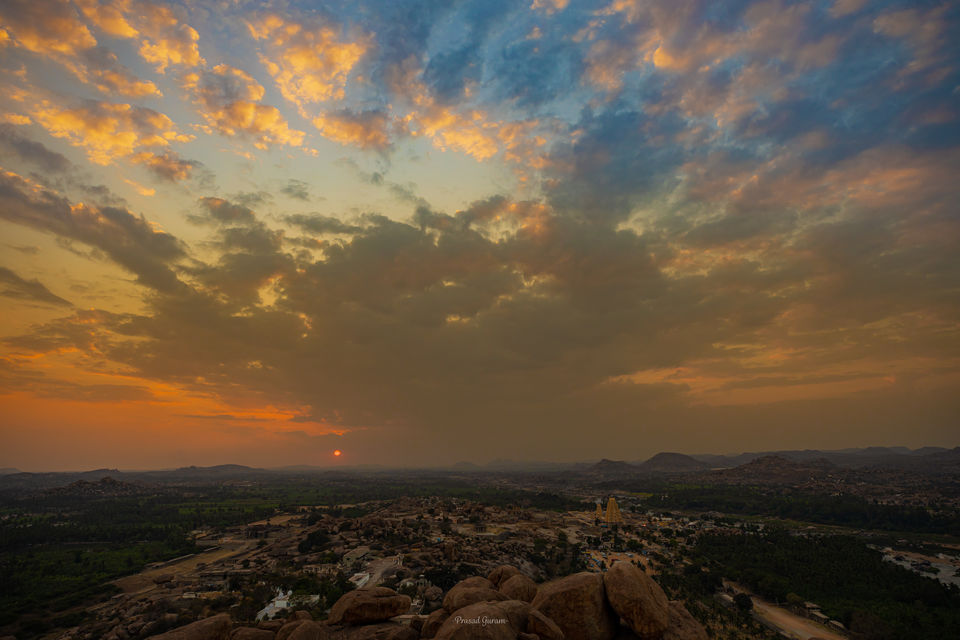
Finally we managed to wake up early the next morning and reached Matanga Hilltop before the sunrise. It was another wonderful experience to watch the setting moon and the rising sun at the same time. On the hill top I was amazed to see a senior citizen from Pune who climbed up the hill in the dark to witness the golden hour.

As it started to become hot, after sometime we got down and headed for the breakfast. It was street food time today. Street food here is all about South Indian joints. You can easily get Idli, Dosa, Paddu and many more delicious South Indian dishes on the go.
How to get here?
There's a direct bus from Mumbai to Hospet which will costs you Rs 2200 return. The route is comfortable throughout, sleeper coach bus will be a preferred choice for this long journey. We took a VRL travels sleeper AC bus from Mumbai, and trust me the journey was very suitable. They provide you with blankets, and the seats can be adjusted as per your preference.
Once you get off at Hospet, it is time to take the local transport. The distance between Hospet and Hampi is about 13 Kms. You can board a bus from Hospet to Hampi, which will cost you Rs. 16. But if you are travelling in a group, then you can take an auto which will cost you Rs. 250.
Food in Hampi
Most of the Hampi’s eateries are concentrated around the Hampi Bazaar . Typical south Indian vegetarian food is the order of the town. That includes Idli & Dosa for the breakfast and the Tali meals for lunch. It’s not very difficult to spot eating joints sell western themes like pancake & likes. A large number of guesthouses in Hampi is attached with some type of restaurants.

Where to stay?
We stayed in Gopi Guest house situated near Hampi market area. It's at a walking distance from Tungabhadra river, Virupaksha Temple, Matanga Hill, and is very near from the most famous Mango Tree Restaurant. There are plenty of options when it comes to staying in Hampi. I chose this guesthouse because it is in the center of Hampi.
What is the best time to Visit Hampi?
Hampi can be visited throughout the year, but given that you have to roam around a lot around Hampi, the winter season are the preferable time. Also, the Hampi Festival is held during the month of November.
What is the best way to travel around Hampi?
Hampi is a place that should be explored and discovered by yourself. At Hampi, you will get bicycles at rent at very cheap rate. You will get bicycles without gear at Rs.100/- per day and with gear at Rs.150/- per day.
You can also get moped for rent at Rs.200/- per day. You will not get scooty and bikes for rent at the temple side of Hampi.
At the Anegundi site, you will get scooty and bikes for rent at Rs.250-400/- per day depending upon your vehicle.
The rate of the vehicles may also vary with seasons.
There are also autorickshaws that you can take to see the various places in Hampi.
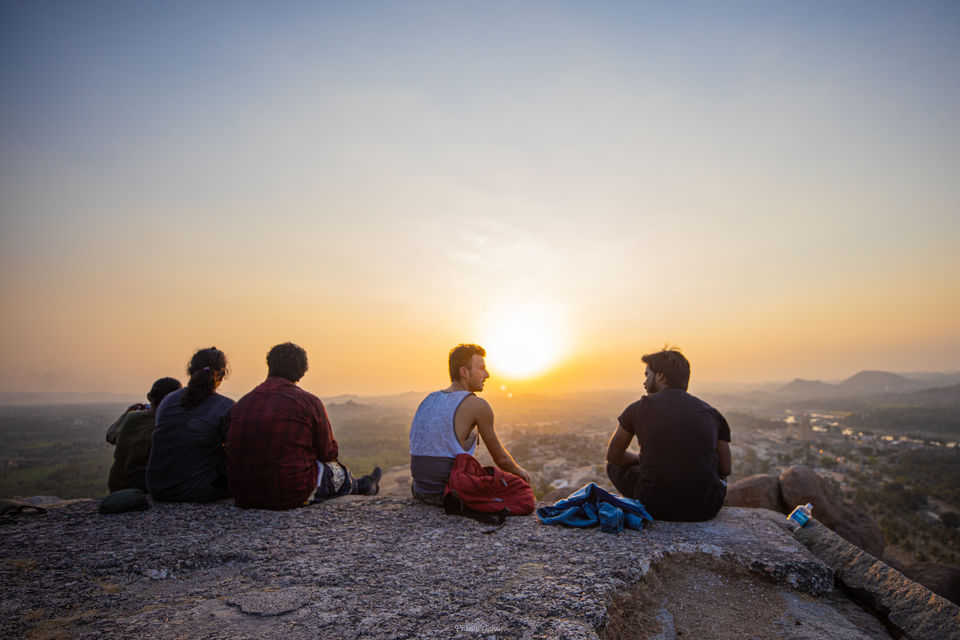
Some important tips:
1. Ideally, it would take around 3 days to explore Hampi. But you can see most of the important places in two days.
2. Most of the places are opened from sunrise to sunset.
3. Wear comfortable clothes and shoes as you have to roam around a lot in Hampi. That is why shoes are very important.
4. Reserve one day for the Anegondi side(Hippie Island) of Hampi. Believe me, this also a wonderful place. The views from the Anjaneya Hills and the top of the Durga Temple is simply breathtaking.
5. Do not forget to meet Lakhsmi, the elephant of the Virupaksha temple. Lakshmi goes for a bath every morning at the Tungabhadra River. Try not to miss the scene.
6. You can cross the Tungabhadra River near the Virupaksha temple to go towards the other side. There are motor boats that take Rs.20/- per head. And if you want, you can also get a coracle to cross the river to the other side.
7. Most important, carry a water bottle to keep your self hydrated. Honest suggestion to carry your own bottle and refill it from your guest-house. Almost every guest-house has a provision from where you can refill it. Do not use one time use bottle, save environment.




